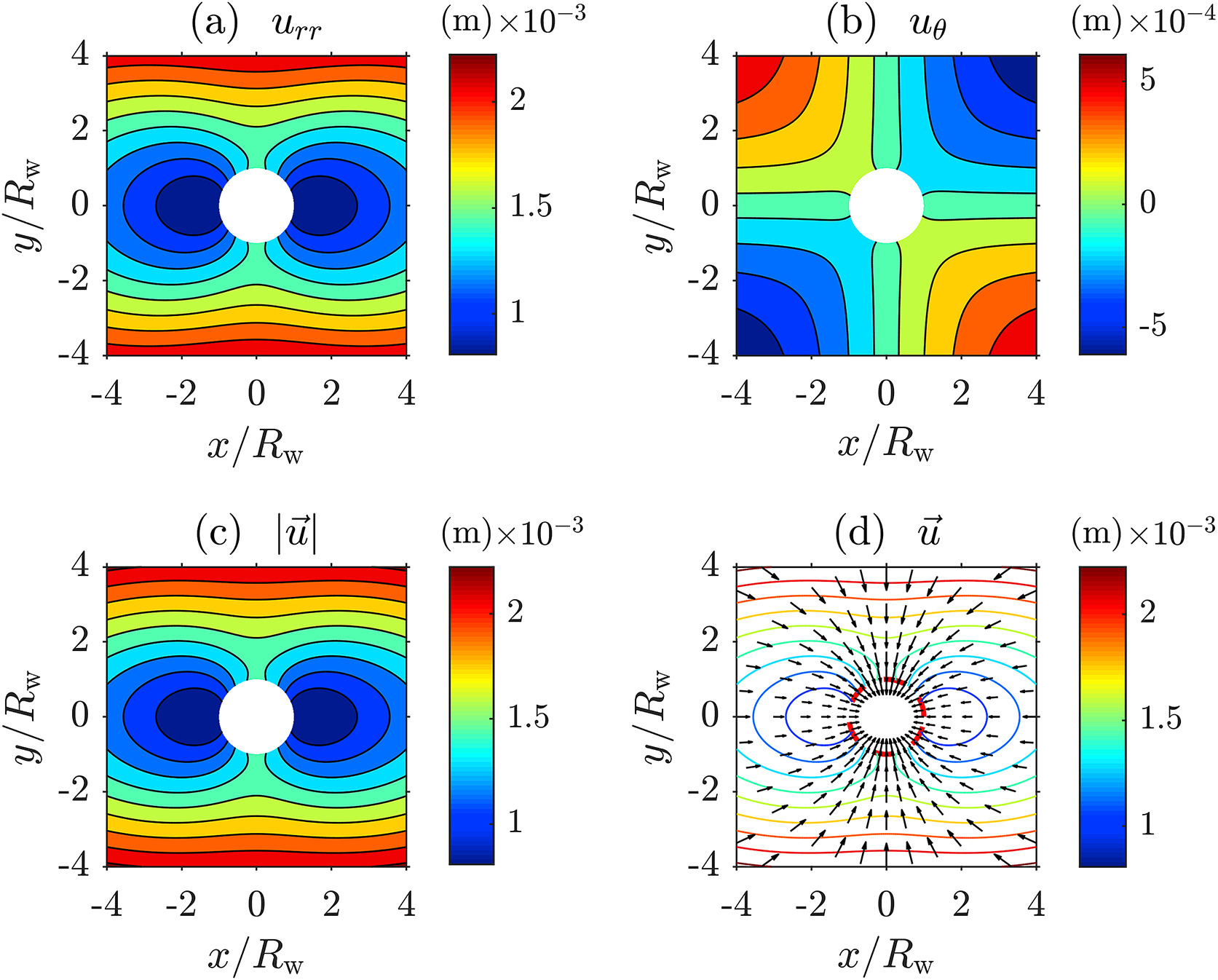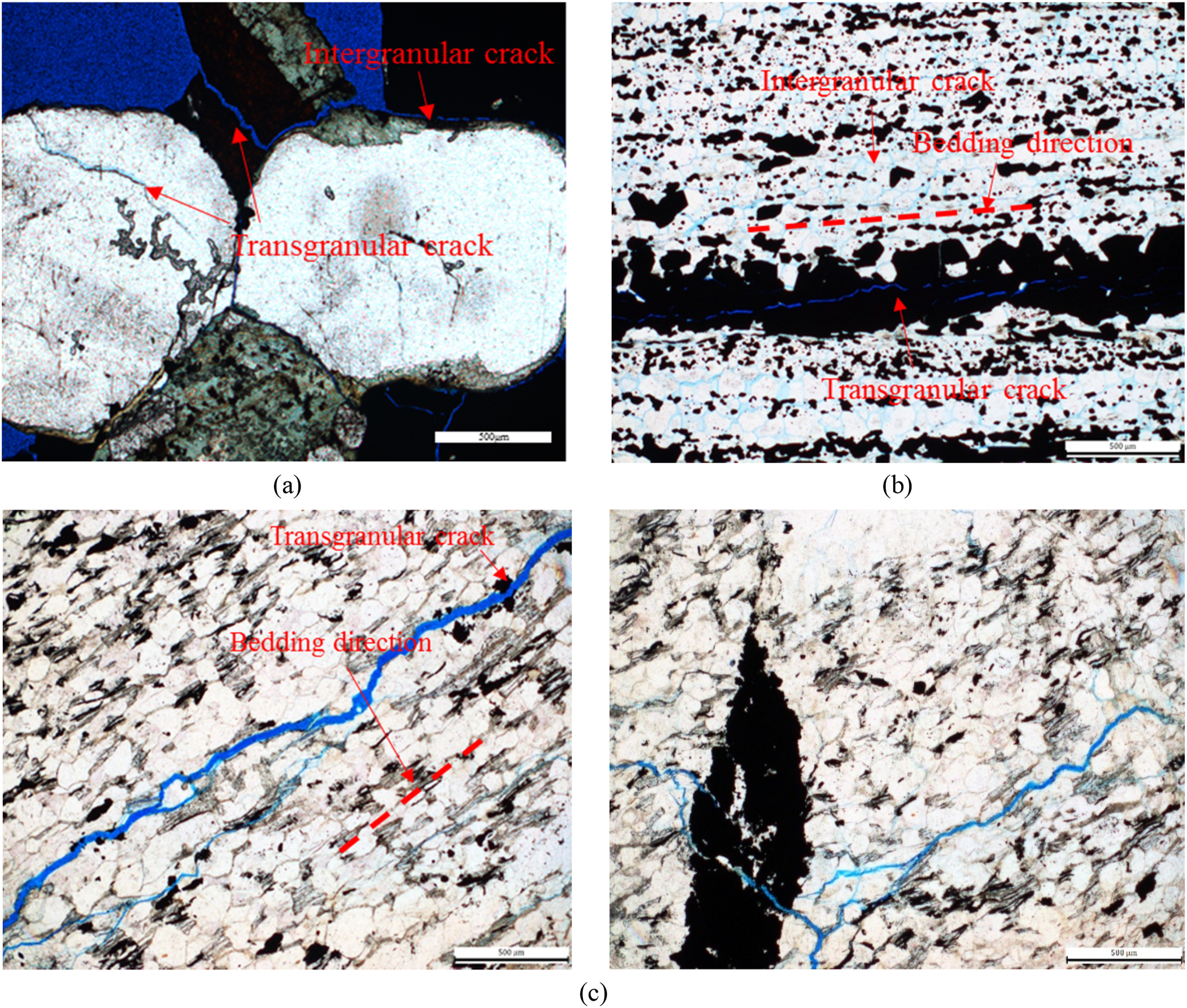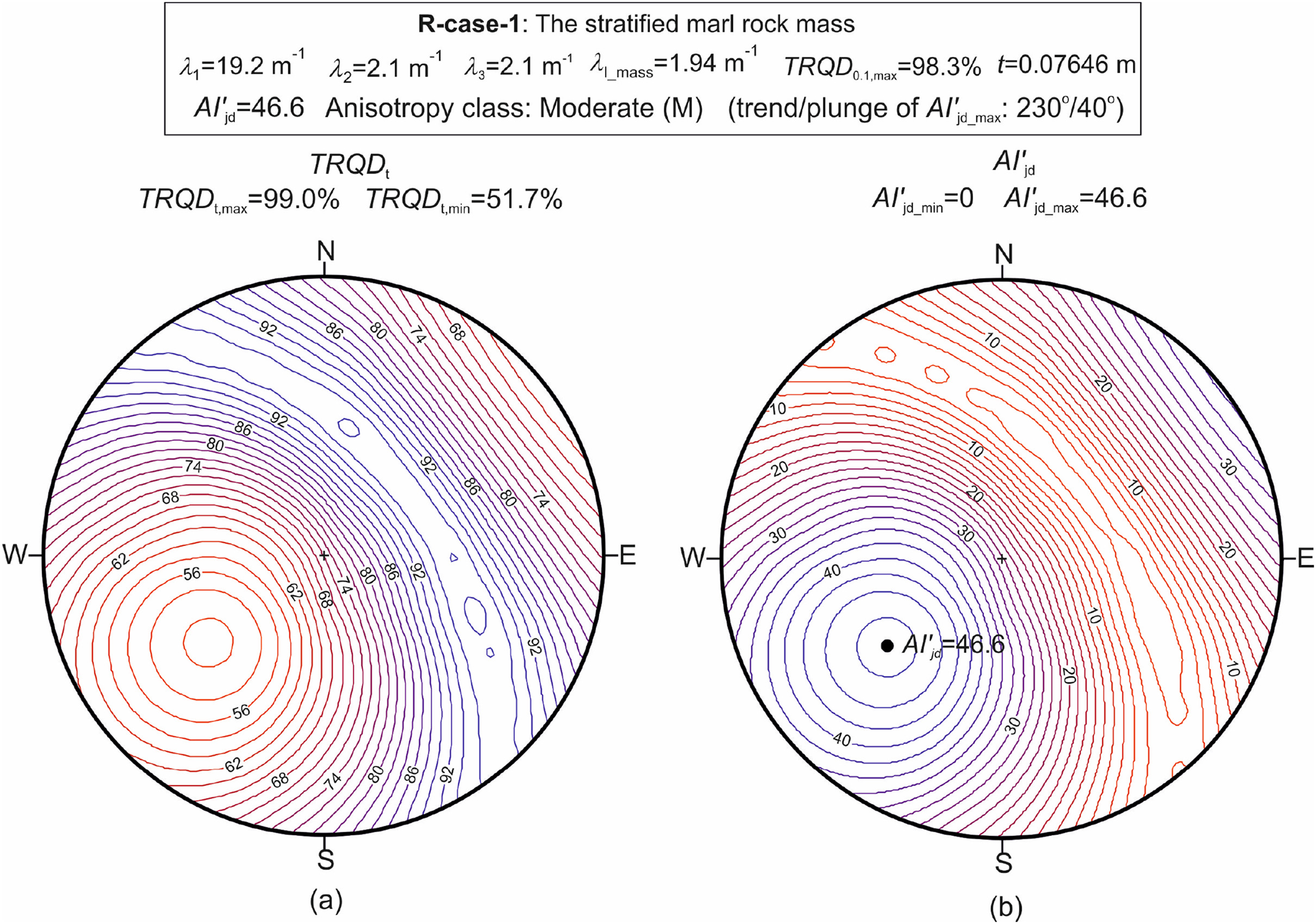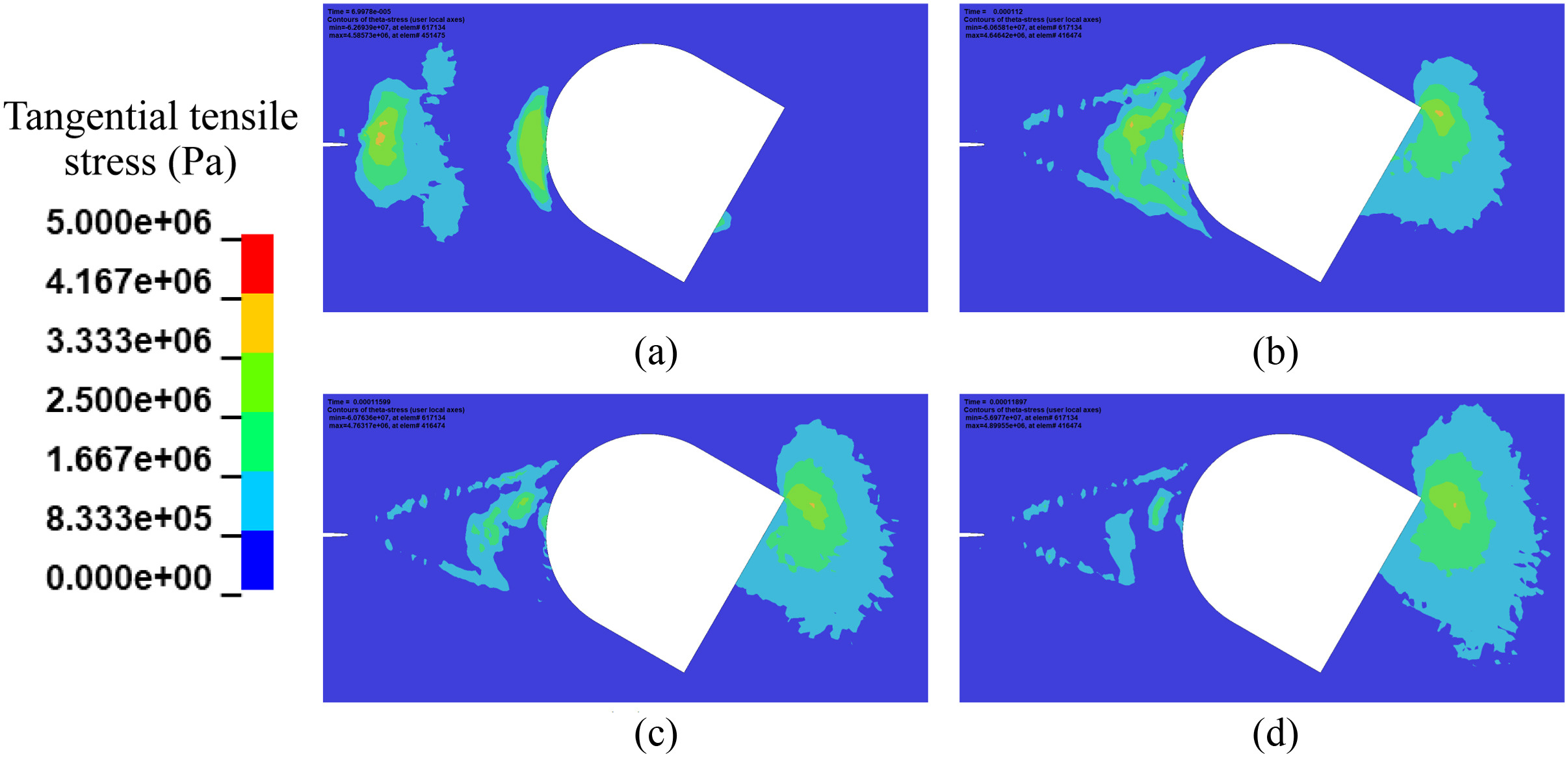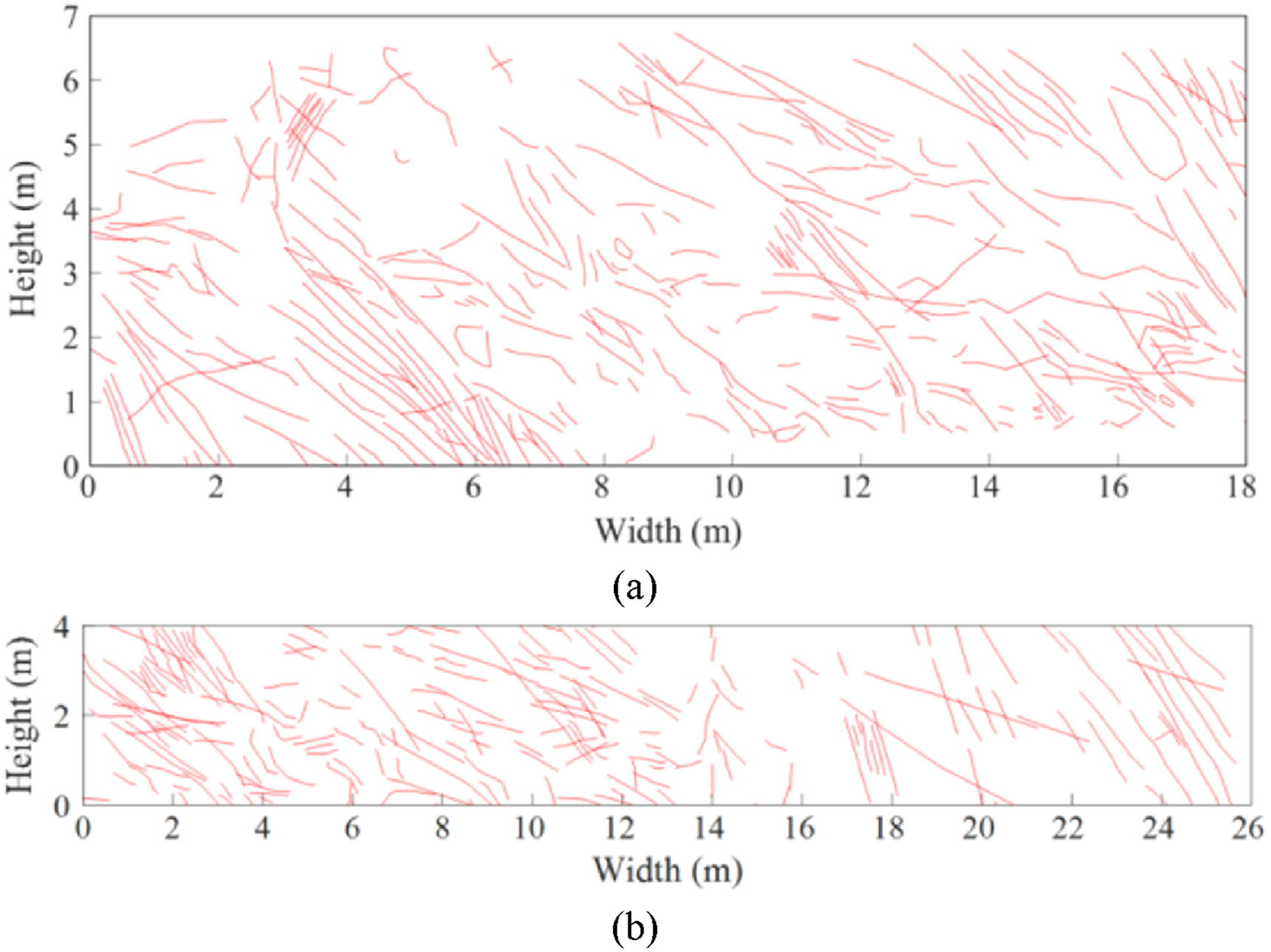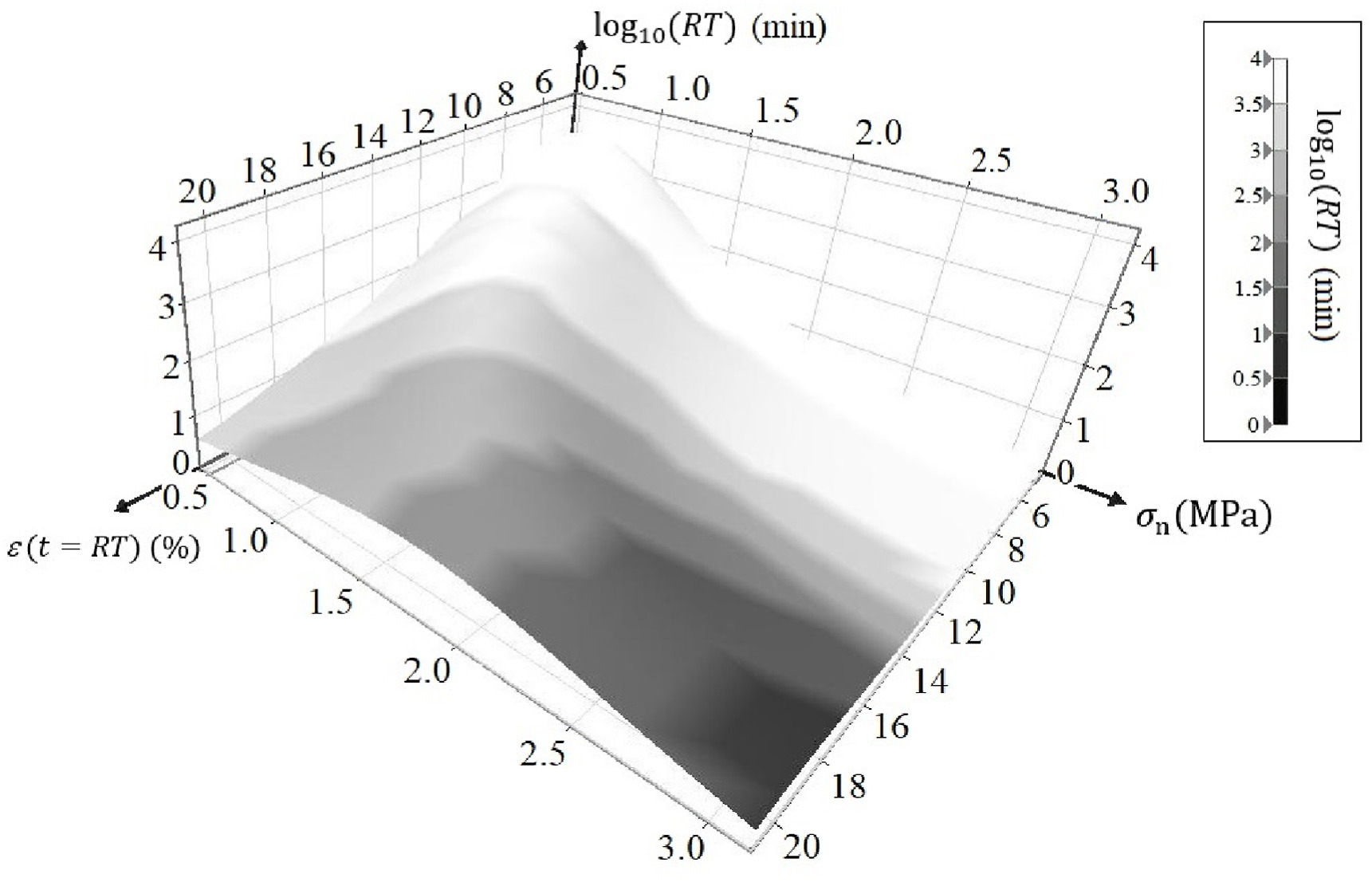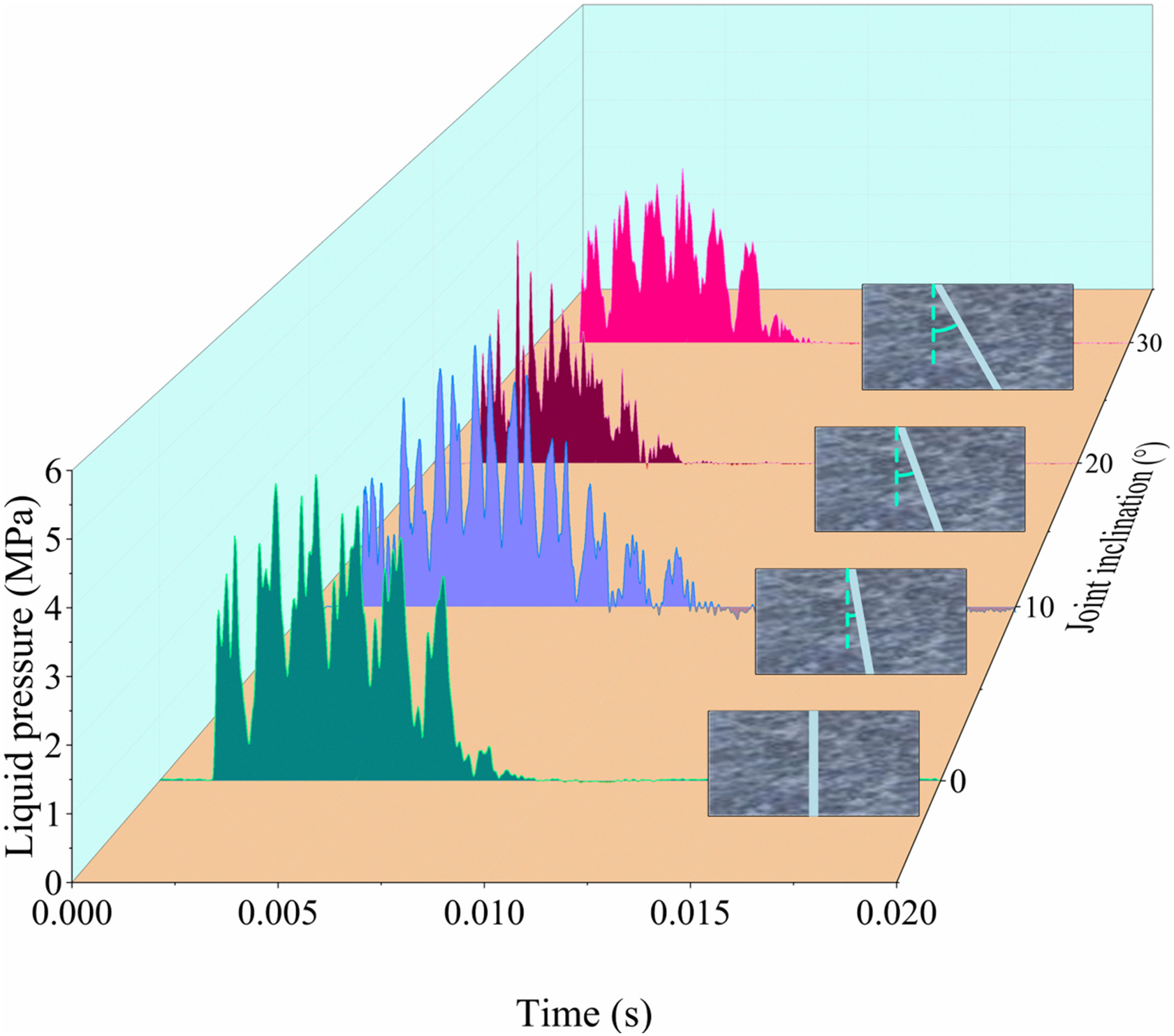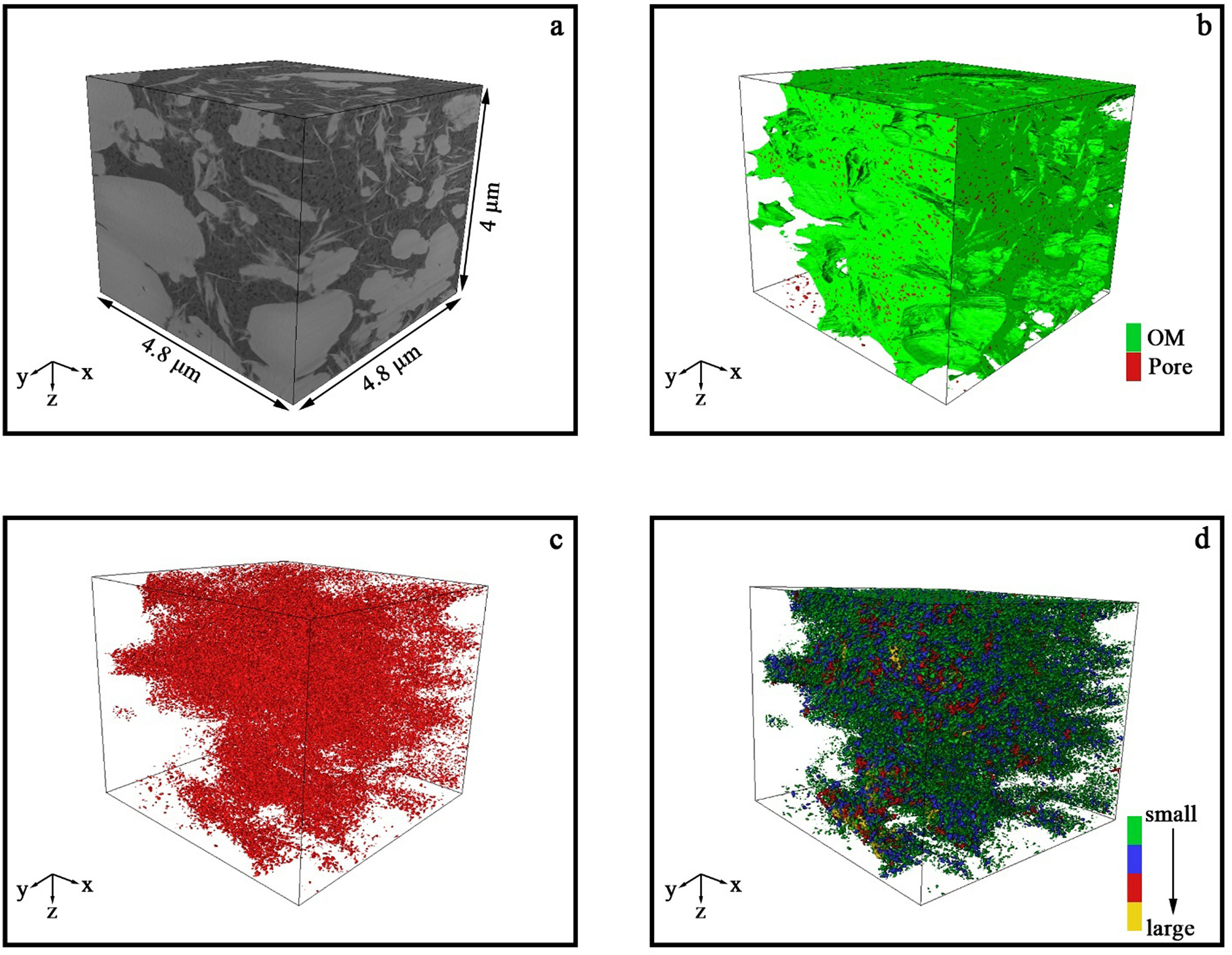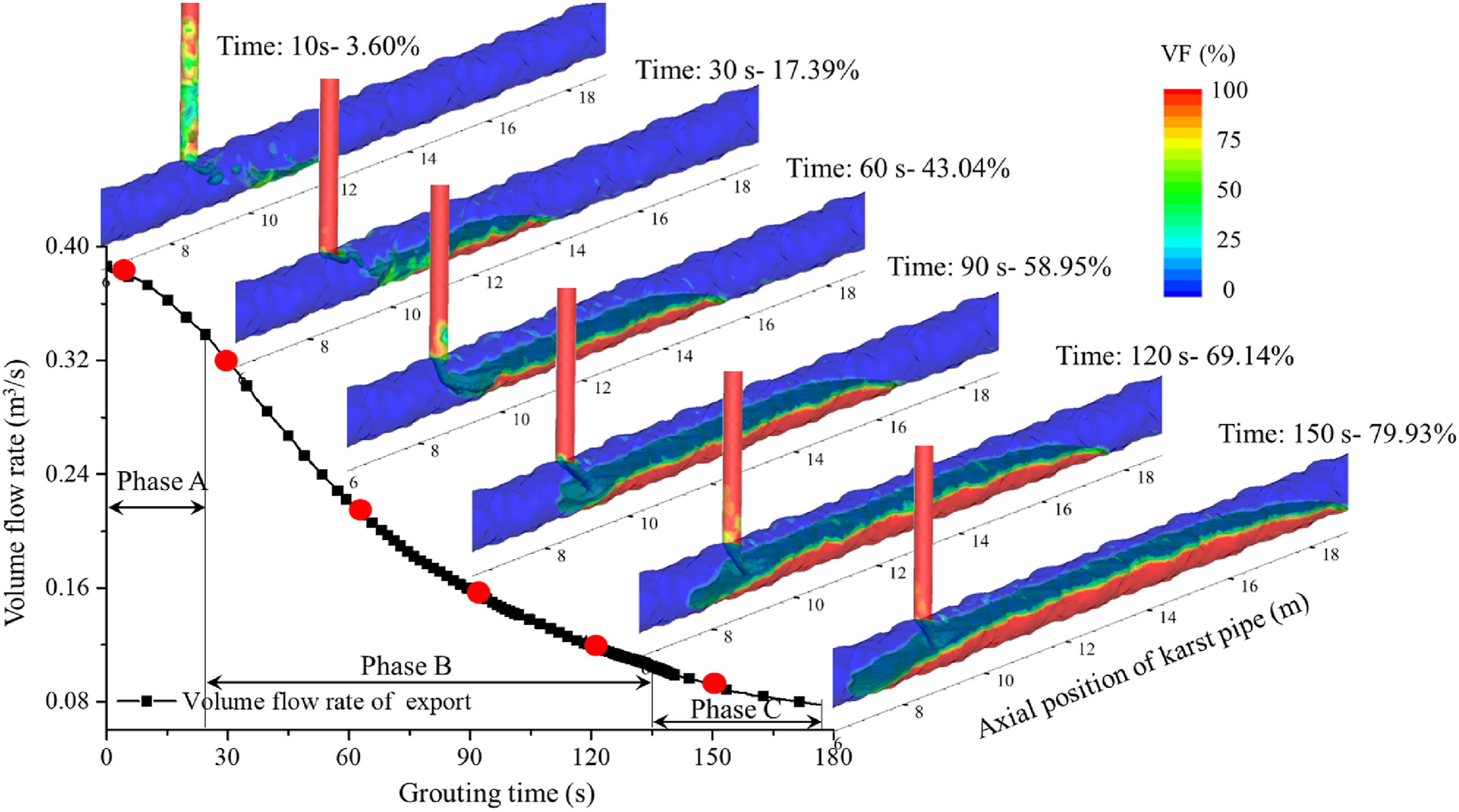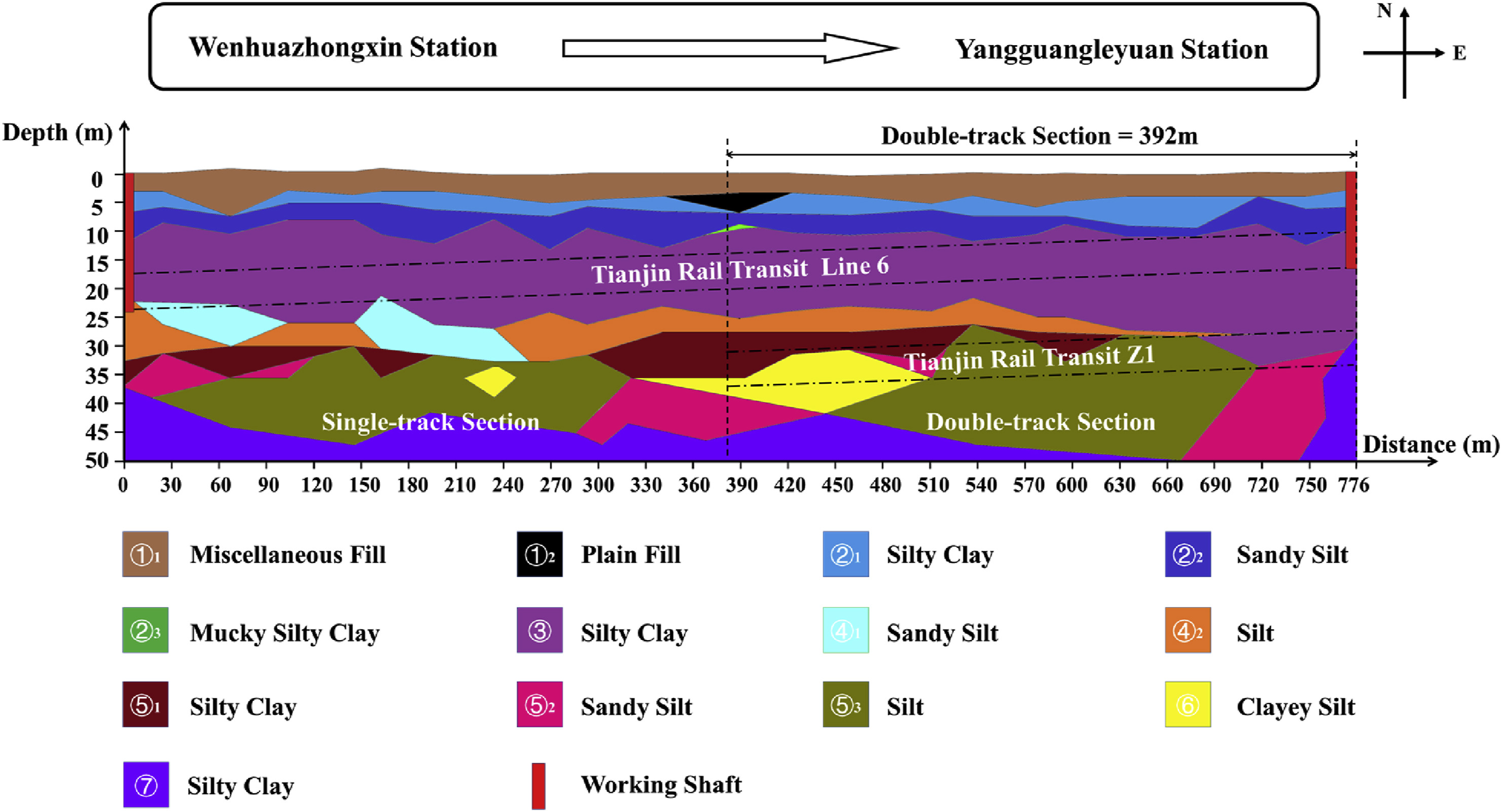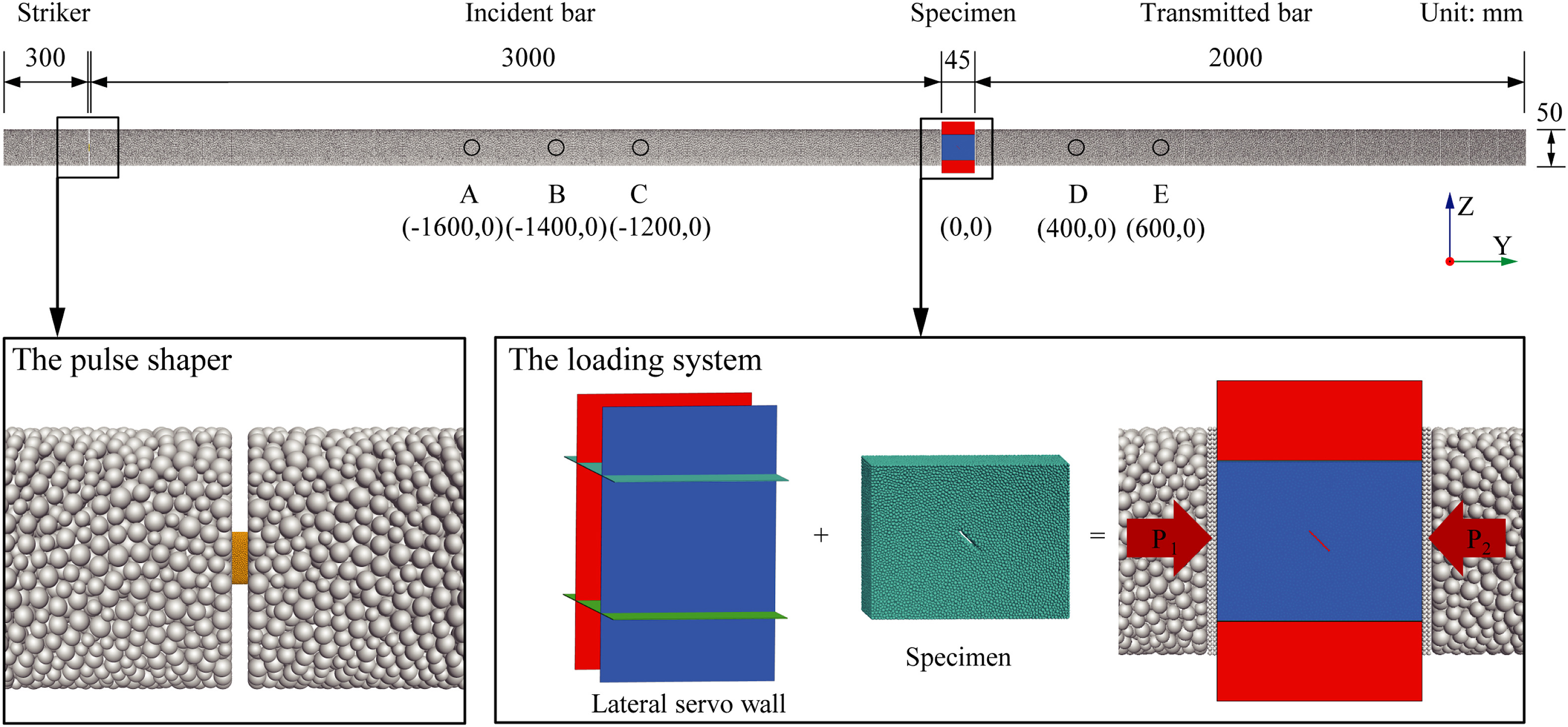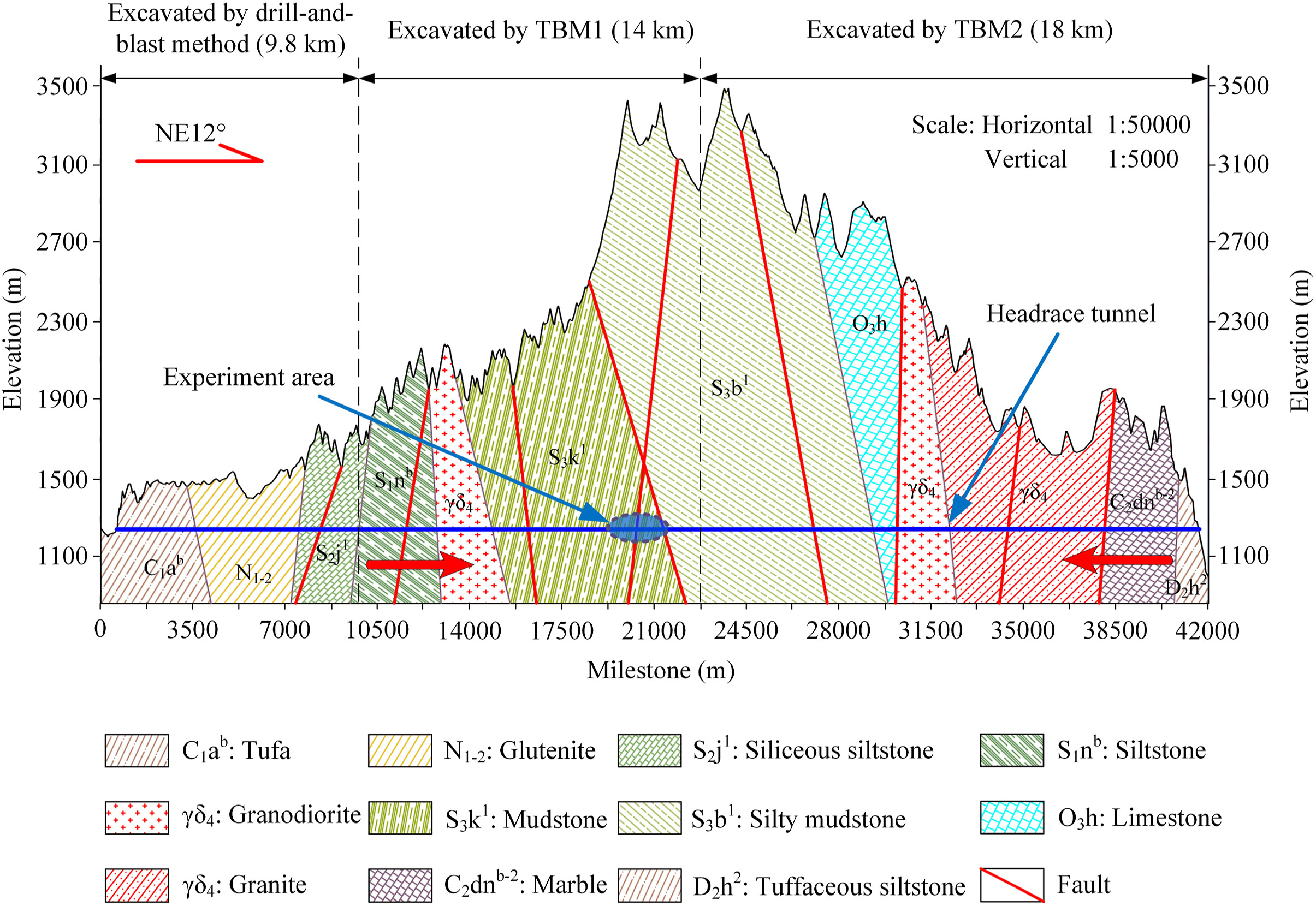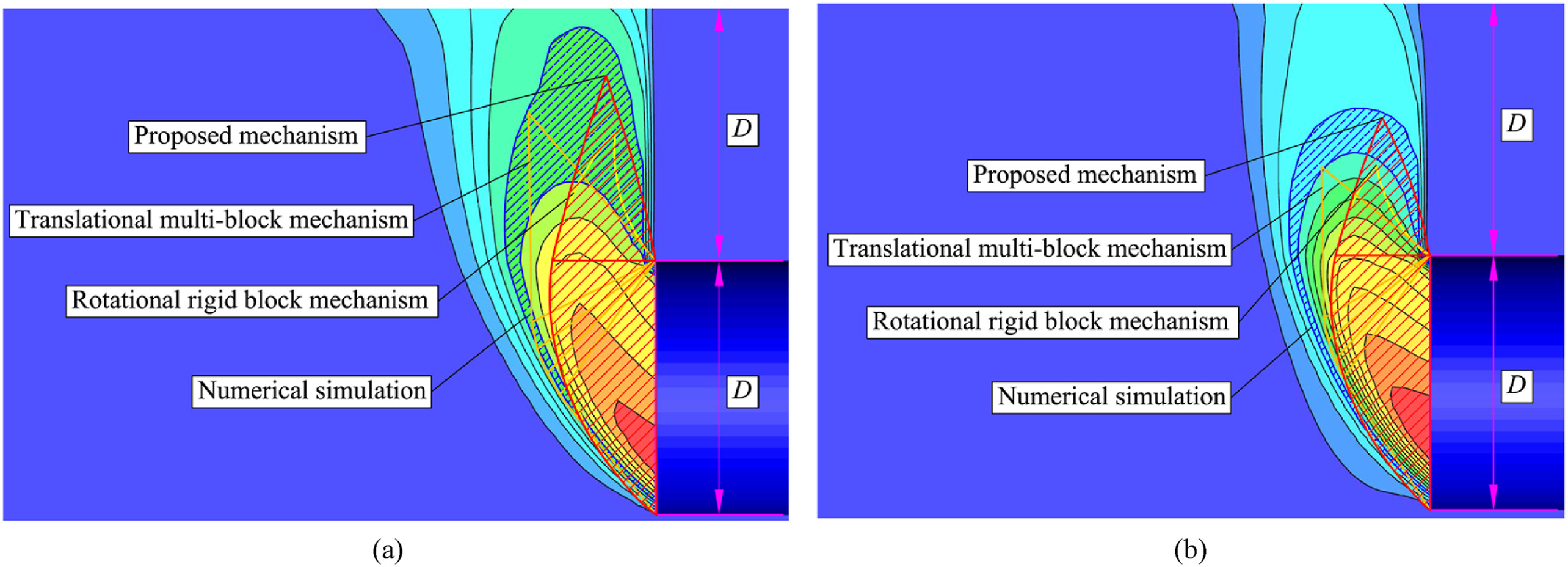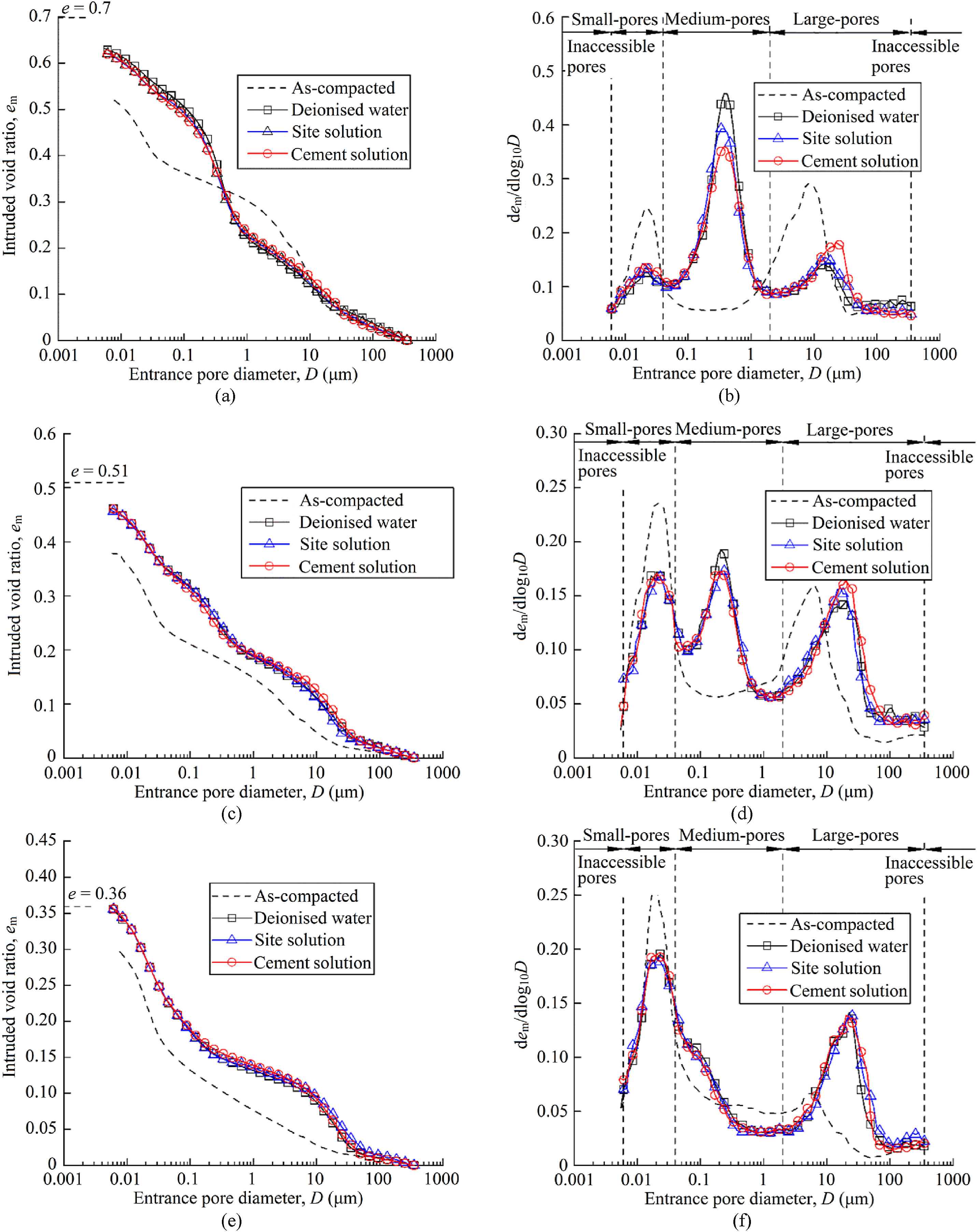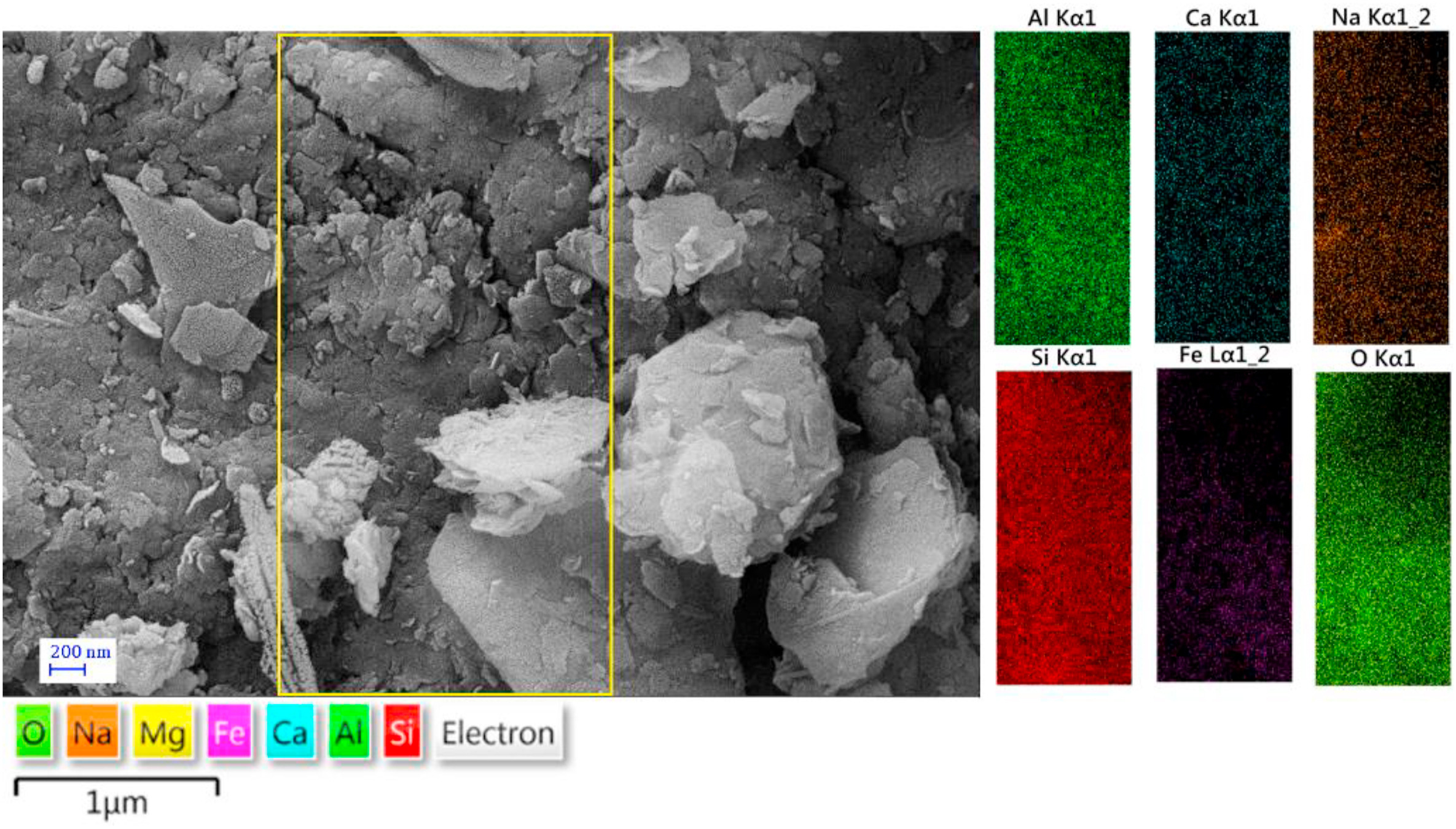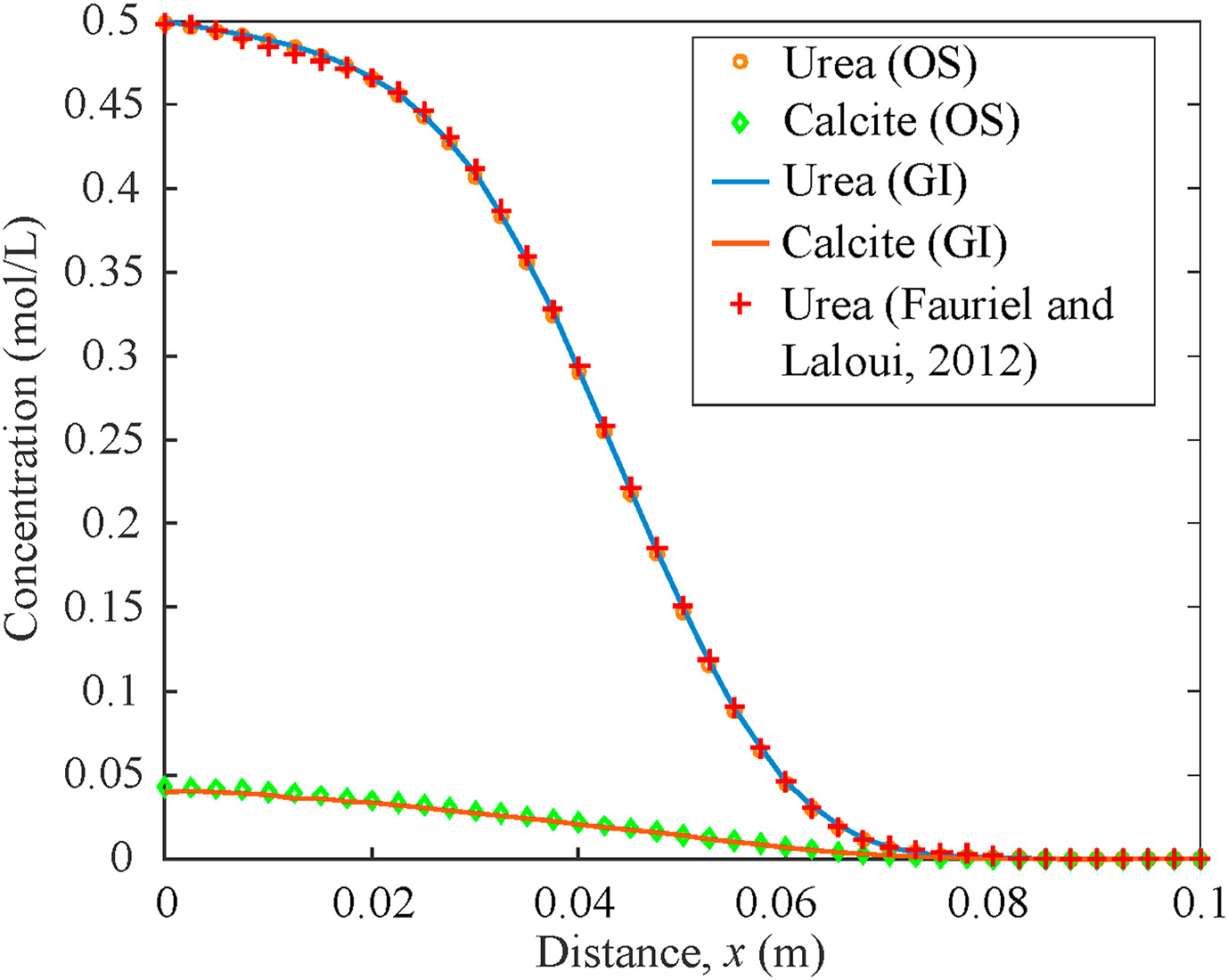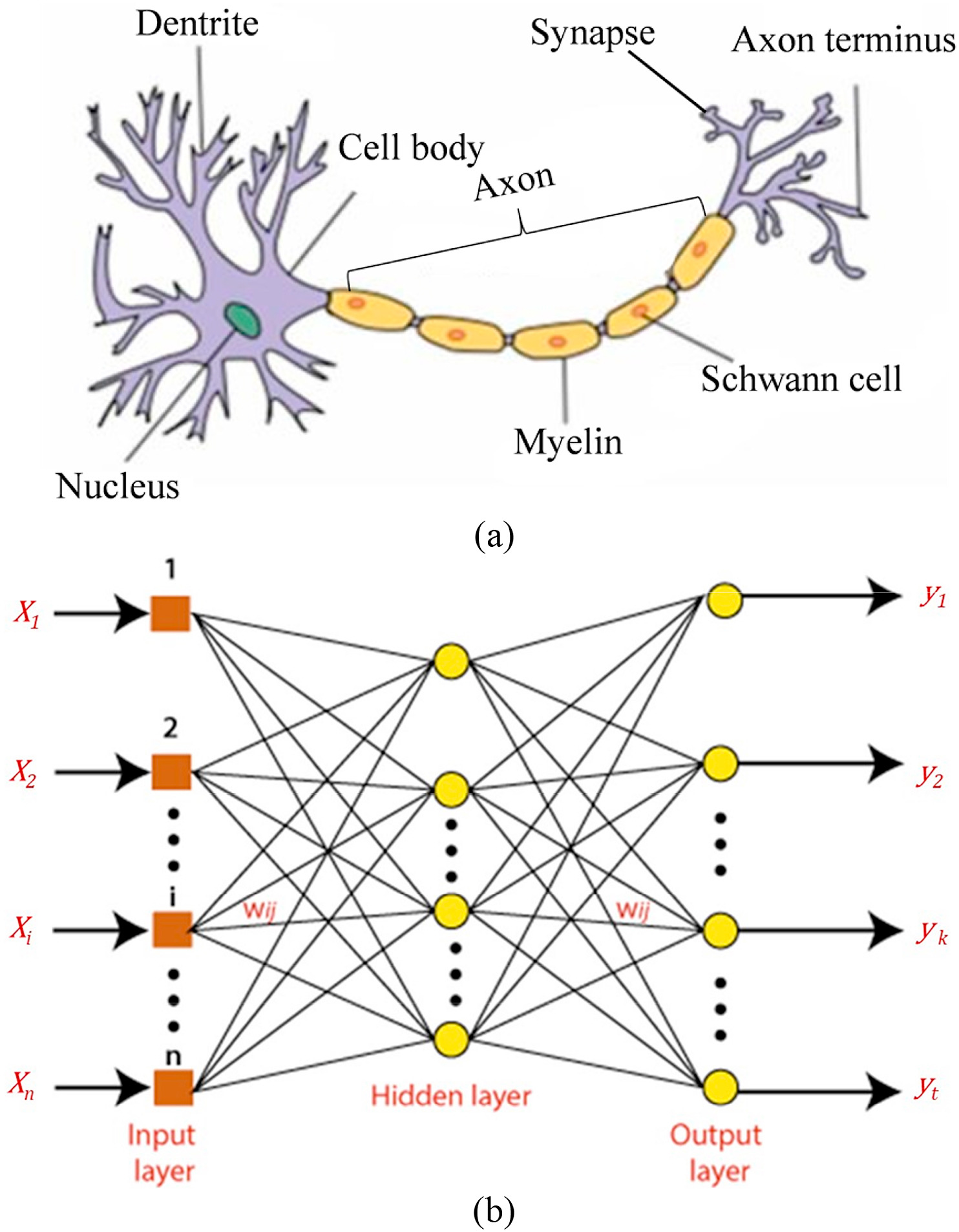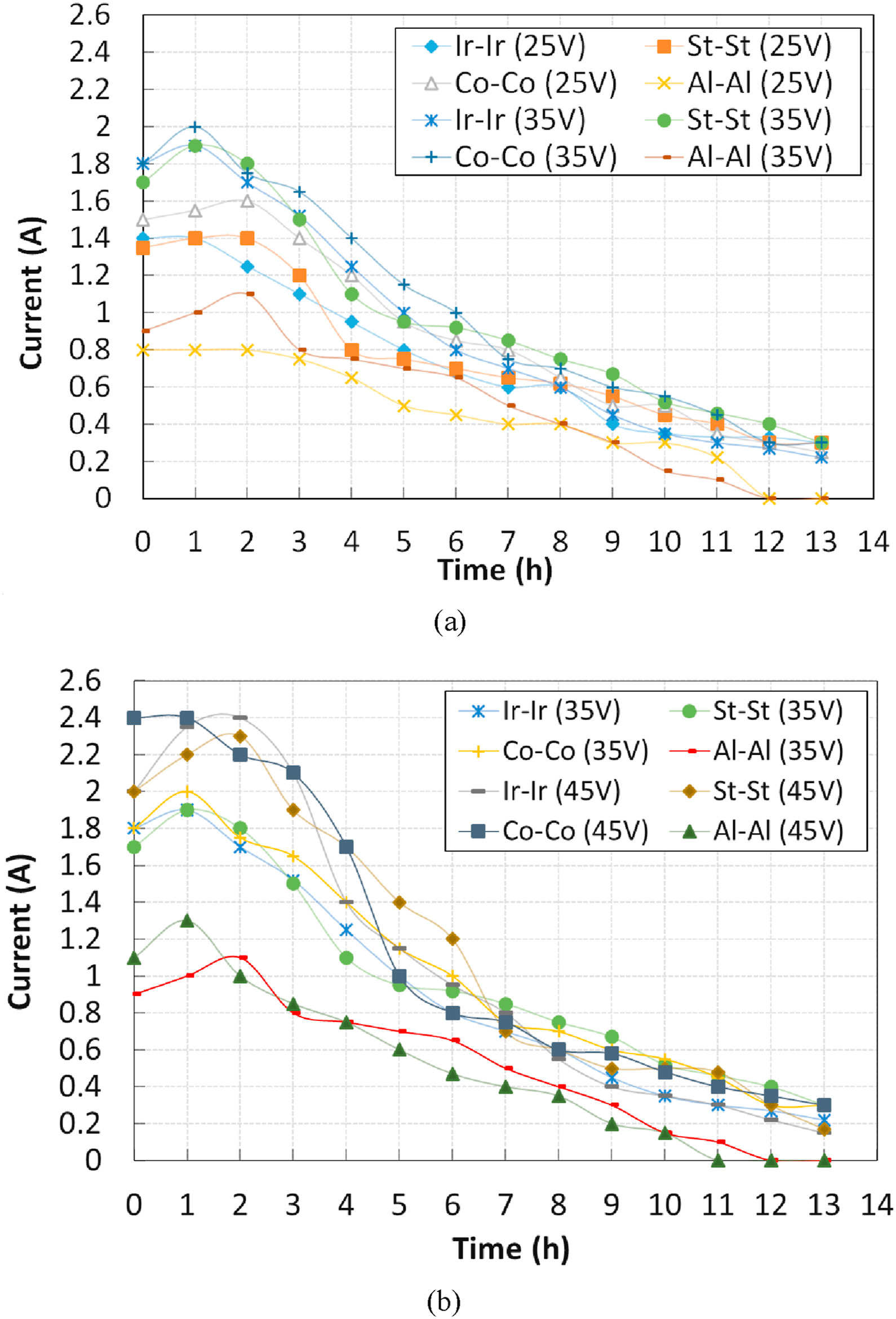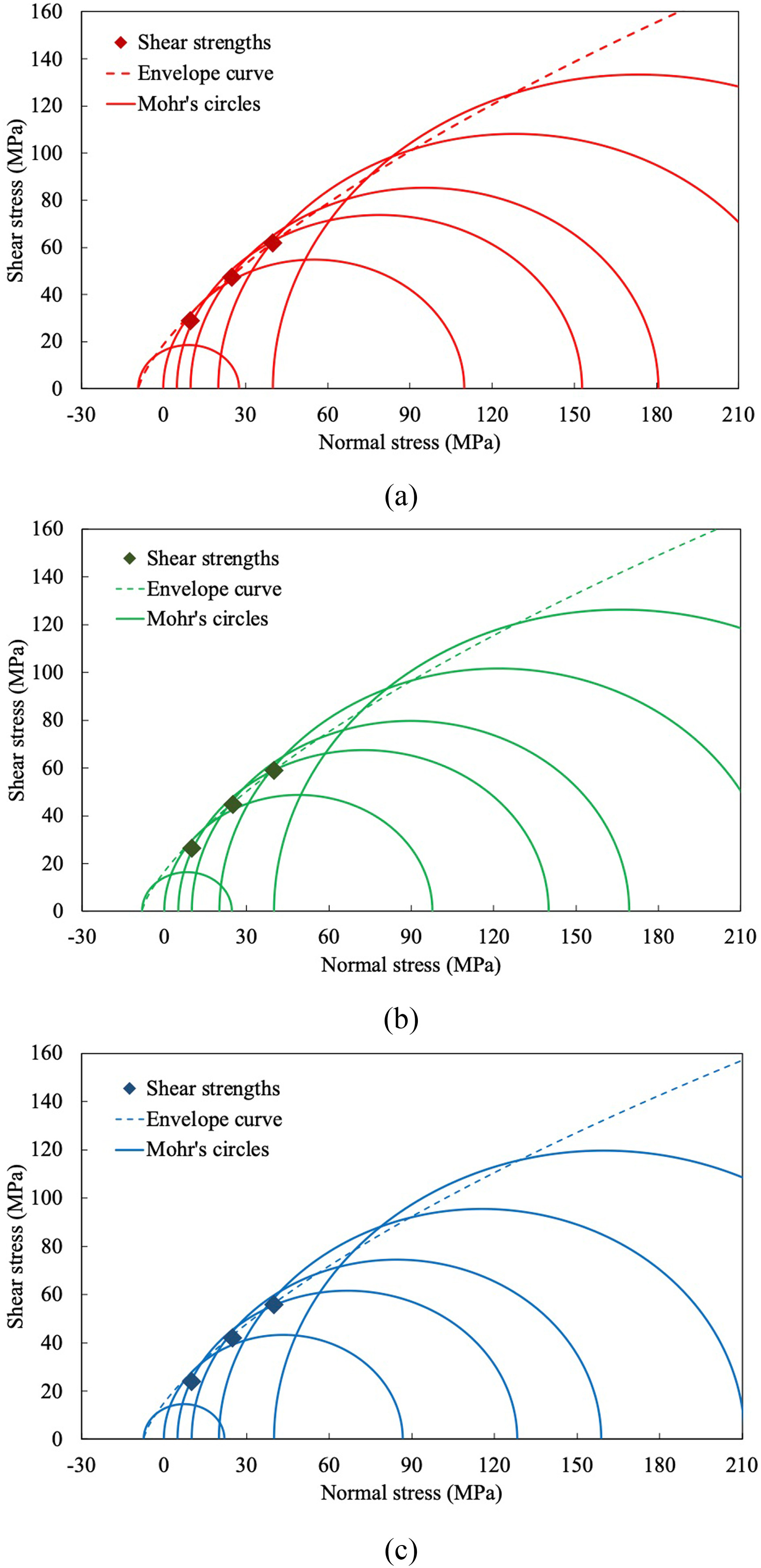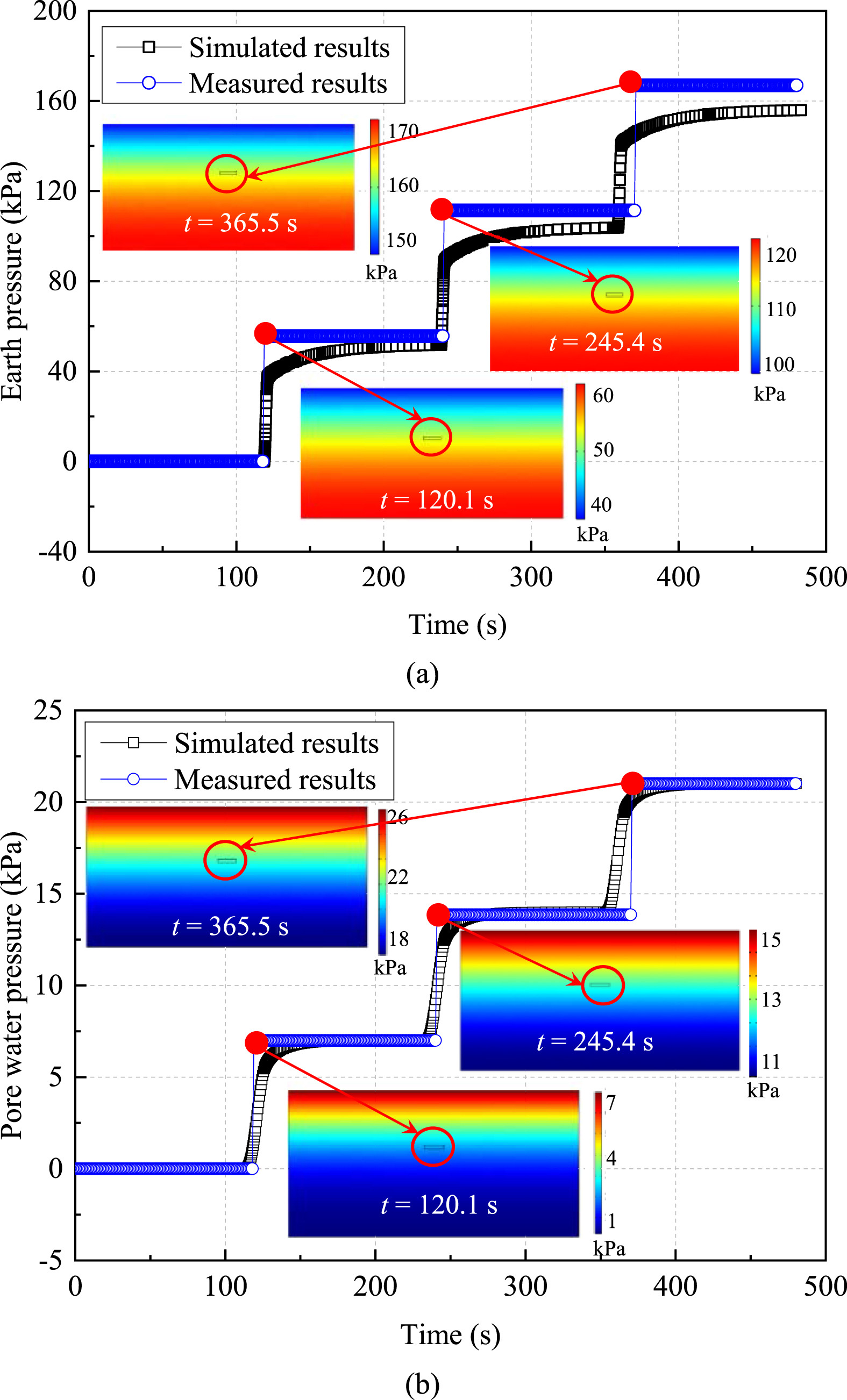-
Poroelastic solution of a wellbore in a swelling rock with non-hydrostatic stress field
Mohsen S. Masoudian, Zhongwei Chen, Christopher Leonardi
2022, 14(2): 303-314. doi:10.1016/j.jrmge.2021.05.003
Abstract: The stress distribution around a circular borehole has been studied extensively. The existing analytical poroelastic solutions, however, often neglect the complex interactions between the solid and fluid that can significantly affect the stress solution. This is important in unconventional gas reservoirs such as coalbeds and shale formations. In order to address this limitation, this paper presents the development ofShow FiguresThe stress distribution around a circular borehole has been studied extensively. The existing analytical poroelastic solutions, however, often neglect the complex interactions between the solid and fluid that can significantly affect the stress solution. This is important in unconventional gas reservoirs such as coalbeds and shale formations. In order to address this limitation, this paper presents the development of a poroelastic solution that takes into account the effect of gas sorption-induced strain. The solution considers drainage of the reservoir fluid through a vertical wellbore in an isotropic, homogenous, poroelastic rock with non-hydrostatic in situ stress field. The sorption-induced shrinkage of coal is modelled using a Langmuir-type curve which relates the volumetric change to the gas pressure. The redistributed stress field around the wellbore after depletion is found by applying Biot's definition of effective stress and Airey's stress functions, which leads to a solution of the inhomogeneous Biharmonic equation. Two sets of boundary conditions were considered in order to simulate the unsupported cavity (open-hole) and supported cavity (lined-hole) cases. The implementation was verified against a numerical solution for both open-hole and lined-hole cases. A comparative study was then conducted to show the significance of the sorption-induced shrinkage in the stress distribution. Finally, a parametric study analysed the sensitivity of the solution to different poroelastic parameters. The results demonstrate that the developed solution is a useful tool that can be employed alongside complex flow models in order to conduct efficient, field-scale coupled hydro-mechanical simulations, especially when the stress-dependent permeability of the reservoir is of concern.
[...]Read more. -
Microwave response characteristics and influencing factors of ores based on dielectric properties of synthetic samples
Feng Lin, Xia-Ting Feng, Chengxiang Yang, Shiping Li, Jiuyu Zhang, Xiangxin Su, Tianyang Tong
2022, 14(2): 315-328. doi:10.1016/j.jrmge.2021.08.002
Abstract: In order to understand the influence of different factors on the microwave response characteristics of ores, the effects of electrical conductivity, metal mineral content, compactness, metal mineral distribution, microwave frequency and temperature on the dielectric properties of synthetic ores (metal mineral and quartz) were studied. Microwave heating tests were carried out on three types of natural ores (HongtoushaShow FiguresIn order to understand the influence of different factors on the microwave response characteristics of ores, the effects of electrical conductivity, metal mineral content, compactness, metal mineral distribution, microwave frequency and temperature on the dielectric properties of synthetic ores (metal mineral and quartz) were studied. Microwave heating tests were carried out on three types of natural ores (Hongtoushan copper ore, Sishanling iron ore and Dandong gold ore) with significant differences in metal mineral contents. The test results showed that under microwave irradiation, the stronger the electrical conductivity of the metal minerals, the smaller the penetration depth in synthetic ore. For those metal minerals with lower electrical conductivity, the microwave absorption coefficient of the synthetic samples increases with increasing metal mineral content. For those metal minerals with higher electrical conductivity, the microwave absorption coefficient of the samples first increases and then decreases as the metal mineral content increases. When the metal minerals are distributed in layers, the penetration depth is much less than that given a uniform distribution. The penetration depth in the sample at microwave frequency of 915 MHz is greater than that at 2.45 GHz. The higher the electrical conductivity of metal minerals used in synthetic ores, the higher the high-temperature sensitivity of electromagnetic shielding coefficient (0 °C–500 °C). The Hongtoushan copper ore with high metal mineral content exhibits obvious size effect. The effects of ore structure and crystal particle size on the distribution characteristics of microcracks were discussed. Based on the test results, a quantitative prediction model of microwave sensitivity of ore was proposed, which provides guidance for the prediction of ore heating effect and the selection of microwave heating sequence of ore.
[...]Read more. -
A novel approach to structural anisotropy classification for jointed rock masses using theoretical rock quality designation formulation adjusted to joint spacing
Harun Sonmez, Murat Ercanoglu, Gulseren Dagdelenler
2022, 14(2): 329-345. doi:10.1016/j.jrmge.2021.08.009
Abstract: Rock quality designation (RQD) has been considered as a one-dimensional jointing degree property since it should be determined by measuring the core lengths obtained from drilling. Anisotropy index of jointing degree (AIjd) was formulated by Zheng et al. (2018) by considering maximum and minimum values of RQD for a jointed rock medium in three-dimensional space. In accordance with spacing terminology by ISRM (1981),Show FiguresRock quality designation (RQD) has been considered as a one-dimensional jointing degree property since it should be determined by measuring the core lengths obtained from drilling. Anisotropy index of jointing degree (AIjd) was formulated by Zheng et al. (2018) by considering maximum and minimum values of RQD for a jointed rock medium in three-dimensional space. In accordance with spacing terminology by ISRM (1981), defining the jointing degree for the rock masses composed of extremely closely spaced joints as well as for the rock masses including widely to extremely widely spaced joints is practically impossible because of the use of 10 cm as a threshold value in the conventional form of RQD. To overcome this limitation, theoretical RQD (TRQDt) introduced by Priest and Hudson (1976) can be taken into consideration only when the statistical distribution of discontinuity spacing has a negative exponential distribution. Anisotropy index of the jointing degree was improved using TRQDt which was adjusted to wider joint spacing by considering Priest (1993)'s recommendation on the use of variable threshold value (t) in TRQDt formulation. After applications of the improved anisotropy index of a jointing degree (AIjd′) to hypothetical jointed rock mass cases, the effect of persistency of joints on structural anisotropy of rock mass was introduced to the improved AIjd′ formulation by considering the ratings of persistency of joints as proposed by Bieniawski (1989)'s rock mass rating (RMR) classification. Two real cases were assessed in the stratified marl and the columnar basalt using the weighted anisotropy index of jointing degree (W_AIjd′). A structural anisotropy classification was developed using the RQD classification proposed by Deere (1963). The proposed methodology is capable of defining the structural anisotropy of a rock mass including joint pattern from extremely closely to extremely widely spaced joints.
[...]Read more. -
Influence of blasting load directions on tunnel stability in fractured rock mass
Xiaohan Li, Zheming Zhu, Meng Wang, Yun Shu, Shuai Deng, Dingjun Xiao
2022, 14(2): 346-365. doi:10.1016/j.jrmge.2021.06.010
Abstract: Tunnels in fractured rock masses are typically damaged by dynamic disturbances from various directions. To investigate the influence of blasting load directions on the stability of a tunnel with a pre-crack nearby, blasting tests were conducted on the physical models of an external crack around a tunnel (ECT) in this study. Failure modes of the tunnels were analysed based on stress wave theory. The Riedel–HiermShow FiguresTunnels in fractured rock masses are typically damaged by dynamic disturbances from various directions. To investigate the influence of blasting load directions on the stability of a tunnel with a pre-crack nearby, blasting tests were conducted on the physical models of an external crack around a tunnel (ECT) in this study. Failure modes of the tunnels were analysed based on stress wave theory. The Riedel–Hiermaier–Thoma (RHT) material model was employed to perform the numerical simulations on ECT models. Stress distribution around the tunnels and final failure patterns of the tunnels were characterised. The results show that, under blasting loads, the pre-crack propagates and then new cracks initiates on the incident side of the tunnel. These cracks extend towards each other and eventually coalesce. Blasting load directions significantly influence the ultimate failure mode of the tunnel in the fractured rock masses. The new cracks on the shadow side of the tunnel appear at different positions when the blasting stress waves come from various directions. The results are meaningful to the analysis of tunnel stability and optimisation of the tunnel support scheme.
[...]Read more. -
A new multiple-factor clustering method considering both box fractal dimension and orientation of joints
Tiexin Liu, Annan Jiang, Jianhui Deng, Jun Zheng, Zhenghu Zhang
2022, 14(2): 366-376. doi:10.1016/j.jrmge.2021.07.014
Abstract: The paper proposes a new multiple-factor clustering method (NMFCM) with consideration of both box fractal dimension (BFD) and orientation of joints. This method assumes that the BFDs of different clusters were uneven, and clustering was performed by redistributing the joints near the boundaries of clusters on a polar map to maximize an index for estimating the difference of the BFD (DBFD). Three main aspects were stuShow FiguresThe paper proposes a new multiple-factor clustering method (NMFCM) with consideration of both box fractal dimension (BFD) and orientation of joints. This method assumes that the BFDs of different clusters were uneven, and clustering was performed by redistributing the joints near the boundaries of clusters on a polar map to maximize an index for estimating the difference of the BFD (DBFD). Three main aspects were studied to develop the NMFCM. First, procedures of the NMFCM and reasonableness of assumptions were illustrated. Second, main factors affecting the NMFCM were investigated by numerical simulations with disk joint models. Finally, two different sections of a rock slope were studied to verify the practicability of the NMFCM. The results demonstrated that: (1) The NMFCM was practical and could effectively alleviate the problem of hard boundary during clustering; (2) The DBFD tended to increase after the improvement of clustering accuracy; (3) The improvement degree of the NMFCM clustering accuracy was mainly influenced by three parameters, namely, the number of clusters, number of redistributed joints, and total number of joints; and (4) The accuracy rate of clustering could be effectively improved by the NMFCM.
[...]Read more. -
Generic creep behavior and creep modeling of an aged surface support liner under tension
D. Guner, O. Golbasi, H. Ozturk
2022, 14(2): 377-384. doi:10.1016/j.jrmge.2021.12.004
Abstract: Polymer-based materials have been motivated to be an alternative support system element in the mining/tunneling industry due to their logistic and geotechnical benefits. Thin spray-on liner (TSL), a term to define the application of the material on the rock surface with a layer ranging from 2 mm to 10 mm in thickness, shows some promising results. TSLs are mainly composed of plastic, polymer, or cement-based ingredieShow FiguresPolymer-based materials have been motivated to be an alternative support system element in the mining/tunneling industry due to their logistic and geotechnical benefits. Thin spray-on liner (TSL), a term to define the application of the material on the rock surface with a layer ranging from 2 mm to 10 mm in thickness, shows some promising results. TSLs are mainly composed of plastic, polymer, or cement-based ingredients to a certain proportion. This study intends to reveal the time-dependent response of TSL specimens, cured throughout 500 d, under four constant stress levels for stable laboratory conditions. The results were correlated using two interrelated equations to predict the material's service life (creep-rupture envelopes). The proposed correlations offered an insight into both the effective permanent support time and the strain amount at the liner failure. The time-dependent deformation of TSL, whose performance is highly responsive to creep behavior, was obtained so that the design engineers may use the findings to avoid the severe problems of material creep. Experimental data were also used to develop a Burgers (four-element) creep model. Since the liner has a nonlinear time-dependent behavior, creep models were built for each stress level separately. Subsequently, a generic equation was obtained using the nonlinear parametric dependencies. There is a good agreement between the proposed model and the experimental results. The proposed model can be used as a basis for future numerical studies related to the support behavior of aged surface support liners.
[...]Read more. -
Multi-exponential model to describe pressure-dependent P- and S-wave velocities and its use to estimate the crack aspect ratio
Mihály Dobróka, Norbert Péter Szabó, Tünde Edit Dobróka, Mátyás Krisztián Baracza
2022, 14(2): 385-395. doi:10.1016/j.jrmge.2021.08.015
Abstract: We present new quantitative model describing the pressure dependence of acoustic P- and S-wave velocities. Assuming that a variety of individual mechanisms or defects (such as cracks, pore collapse and grain crushing) can contribute to the pressure-dependent change of the wave velocity, we order a characteristic pressure to all of them and allow a series of exponential terms in the description of the (P- and S-waves)Show FiguresWe present new quantitative model describing the pressure dependence of acoustic P- and S-wave velocities. Assuming that a variety of individual mechanisms or defects (such as cracks, pore collapse and grain crushing) can contribute to the pressure-dependent change of the wave velocity, we order a characteristic pressure to all of them and allow a series of exponential terms in the description of the (P- and S-waves) velocity-pressure function. We estimate the parameters of the multi-exponential rock physical model in inversion procedures using laboratory measured P- and S-wave velocity data. As is known, the conventional damped least squares method gives acceptable results only when one or two individual mechanisms are assumed. Increasing the number of exponential terms leads to highly nonlinear ill-posed inverse problem. Due to this reason, we develop the spectral inversion method (SIM) in which the velocity amplitudes (the spectral lines in the characteristic pressure spectrum) are only considered as unknowns. The characteristic pressures (belonging to the velocity amplitudes) are excluded from the set of inversion unknowns, instead, they are defined in a set of fixed positions equidistantly distributed in the actual interval of the independent variable (pressure). Through this novel linear inversion method, we estimate the parameters of the multi-exponential rock physical model using laboratory measured P- and S-wave velocity data. The characteristic pressures are related to the closing pressures of cracks which are described by well-known rock mechanical relationships depending on the aspect ratio of elliptical cracks. This gives the possibility to estimate the aspect ratios in terms of the characteristic pressures.
[...]Read more. -
Laboratory-scale investigation of response characteristics of liquid-filled rock joints with different joint inclinations under dynamic loading
Jin Huang, Xiaoli Liu, Danqing Song, Jian Zhao, Enzhi Wang, Jianmin Zhang
2022, 14(2): 396-406. doi:10.1016/j.jrmge.2021.08.014
Abstract: In underground rock engineering, water-bearing faults may be subjected to dynamic loading, resulting in the coupling of hydraulic and dynamic hazards. Understanding the interaction mechanism between the stress waves induced by dynamic loadings and liquid-filled rock joints is therefore crucial. In this study, an auxiliary device for simulating the liquid-filled layer was developed to analyze the dynamic response charShow FiguresIn underground rock engineering, water-bearing faults may be subjected to dynamic loading, resulting in the coupling of hydraulic and dynamic hazards. Understanding the interaction mechanism between the stress waves induced by dynamic loadings and liquid-filled rock joints is therefore crucial. In this study, an auxiliary device for simulating the liquid-filled layer was developed to analyze the dynamic response characteristics of liquid-filled rock joints in laboratory. Granite and polymethyl methacrylate (PMMA) specimens were chosen for testing, and high-amplitude shock waves induced by a split Hopkinson pressure bar (SHPB) were used to produce dynamic loadings. Impact loading tests were conducted on liquid-filled rock joints with different joint inclinations. The energy propagation coefficient and peak liquid pressure were proposed to investigate the energy propagation and attenuation of waves propagating across the joints, as well as the dynamic response characteristics of the liquid in the liquid-filled rock joints. For the inclination angle range considered herein, the experimental results showed that the energy propagation coefficient gently diminished with increasing joint inclination, and smaller coefficient values were obtained for granite specimens compared with PMMA specimens. The peak liquid pressure exhibited a gradually decreasing trend with increasing joint inclination, and the peak pressure for granite specimens was slightly higher than that for PMMA specimens. Overall, this paper may provide a considerably better method for studying liquid-filled rock joints at the laboratory scale, and serves as a guide for interpreting the underlying mechanisms for interactions between stress waves and liquid-filled rock joints.
[...]Read more. -
Characterization of 3D pore nanostructure and stress-dependent permeability of organic-rich shales in northern Guizhou Depression, China
Xiaofang Jiang, Shouchun Deng, Haibo Li, Hong Zuo
2022, 14(2): 407-422. doi:10.1016/j.jrmge.2021.08.019
Abstract: The three-dimensional (3D) pore structures and permeability of shale are critical for forecasting gas production capacity and guiding pressure differential control in practical reservoir extraction. However, few investigations have analyzed the effects of microscopic organic matter (OM) morphology and 3D pore nanostructures on the stress sensitivity, which are precisely the most unique and controlling factors of reseShow FiguresThe three-dimensional (3D) pore structures and permeability of shale are critical for forecasting gas production capacity and guiding pressure differential control in practical reservoir extraction. However, few investigations have analyzed the effects of microscopic organic matter (OM) morphology and 3D pore nanostructures on the stress sensitivity, which are precisely the most unique and controlling factors of reservoir quality in shales. In this study, ultra-high nanoscale-resolution imaging experiments, i.e. focused ion beam-scanning electron microscopy (FIB-SEMs), were conducted on two organic-rich shale samples from Longmaxi and Wufeng Formations in northern Guizhou Depression, China. Pore morphology, porosity of 3D pore nanostructures, pore size distribution, and connectivity of the six selected regions of interest (including clump-shaped OMs, interstitial OMs, framboidal pyrite, and microfractures) were qualitatively and quantitatively characterized. Pulse decay permeability (PDP) measurement was used to investigate the variation patterns of stress-dependent permeability and stress sensitivity of shales under different confining pressures and pore pressures, and the results were then used to calculate the Biot coefficients for the two shale formations. The results showed that the samples have high OM porosity and 85% of the OM pores have the radius of less than 40 nm. The OM morphology and pore structure characteristics of the Longmaxi and Wufeng Formations were distinctly different. In particular, the OM in the Wufeng Formation samples developed some OM pores with radius larger than 500 nm, which significantly improved the connectivity. The macroscopic permeability strongly depends on the permeability of OM pores. The stress sensitivity of permeability of Wufeng Formation was significantly lower than that of Longmaxi Formation, due to the differences in OM morphology and pore structures. The Biot coefficients of 0.729 and 0.697 were obtained for the Longmaxi and Wufeng Formations, respectively.
[...]Read more. -
A grouting simulation method for quick-setting slurry in karst conduit: The sequential flow and solidification method
Zhenhao Xu, Dongdong Pan, Shucai Li, Yichi Zhang, Zehua Bu, Jie Liu
2022, 14(2): 423-435. doi:10.1016/j.jrmge.2021.11.006
Abstract: It is difficult to temporally and spatially track and characterize the slurry viscosity in flowing water during grouting simulation. In this study, a sequential flow and solidification (SFS) method considering the spatial-temporal evolution of slurry viscosity in flowing water in karst conduit is proposed. First, a time-dependent model for the threshold function of slurry viscosity is established. During the groutingShow FiguresIt is difficult to temporally and spatially track and characterize the slurry viscosity in flowing water during grouting simulation. In this study, a sequential flow and solidification (SFS) method considering the spatial-temporal evolution of slurry viscosity in flowing water in karst conduit is proposed. First, a time-dependent model for the threshold function of slurry viscosity is established. During the grouting process, the spatial-temporal evolution of slurry viscosity is revealed by tracking the diffusion behavior of the slurry injected at different times. This method is capable of describing the gradual solidification process of the slurry during grouting. Furthermore, a physical model of grouting in a karst conduit is developed. Second, the effectiveness of the SFS method in grouting simulation is verified by the experiment of grouting conduit in flowing water. The SFS method enables real-time monitoring of fluid velocity and pressure during grouting in flowing water and provides a feasible calculation method for revealing the grouting plugging mechanism in complex karst conduits at different engineering scales. In addition, it can be used to guide the design of grouting tests in flowing water, improve cost efficiency, and provide theoretical basis for optimizing grouting design and slurry selection.
[...]Read more. -
Assessing the deformation response of double-track overlapped tunnels using numerical simulation and field monitoring
Yao Hu, Huayang Lei, Gang Zheng, Liang Shi, Tianqi Zhang, Zhichao Shen, Rui Jia
2022, 14(2): 436-447. doi:10.1016/j.jrmge.2021.07.003
Abstract: The unprecedented rate of metro construction has led to a highly complex network of metro lines. Tunnels are being overlapped to an ever-increasing degree. This paper investigates the deformation response of double-track overlapped tunnels in Tianjin, China using finite element analysis (FEA) and field monitoring, considering the attributes of different tunneling forms. With respect to the upper tunneling, the resultShow FiguresThe unprecedented rate of metro construction has led to a highly complex network of metro lines. Tunnels are being overlapped to an ever-increasing degree. This paper investigates the deformation response of double-track overlapped tunnels in Tianjin, China using finite element analysis (FEA) and field monitoring, considering the attributes of different tunneling forms. With respect to the upper tunneling, the results of the FEA and field monitoring showed that the maximum vertical displacements of the ground surface during the tail passage were 2.06 mm, 2.25 mm and 2.39 mm obtained by the FEA, field monitoring and Peck calculation, respectively; the heaves on the vertical displacement curve were observed at 8 m (1.25D, where D is the diameter of the tunnel) away from the center of the tunnel and the curve at both sides was asymmetrical. Furthermore, the crown and bottom produce approximately 0.38 mm and 1.26 mm of contraction, respectively. The results of the FEA of the upper and lower sections demonstrated that the tunneling form has an obvious influence on the deformation response of the double-track overlapped tunnel. Compared with the upper tunneling, the lower tunneling exerted significantly less influence on the deformation response, which manifested as a smaller displacement of the strata and deformation of the existing tunnel. The results of this study on overlapped tunnels can provide a reference for similar projects in the future.
[...]Read more. -
Comparison of dominant frequency attenuation of blasting vibration for different charge structures
Pengchang Sun, Wenbo Lu, Junru Zhou, Xincheng Huang, Ming Chen, Qi Li
2022, 14(2): 448-459. doi:10.1016/j.jrmge.2021.07.002
Abstract: Dominant frequency attenuation is a significant concern for frequency-based criteria of blasting vibration control. It is necessary to develop a concise and practical prediction equation describing dominant frequency attenuation. In this paper, a prediction equation of dominant frequency that accounts for primary parameters influencing the dominant frequency was proposed based on theoretical and dimensional analyses.Show FiguresDominant frequency attenuation is a significant concern for frequency-based criteria of blasting vibration control. It is necessary to develop a concise and practical prediction equation describing dominant frequency attenuation. In this paper, a prediction equation of dominant frequency that accounts for primary parameters influencing the dominant frequency was proposed based on theoretical and dimensional analyses. Three blasting experiments were carried out in the Chiwan parking lot for collecting blasting vibration data used to conduct regression analysis of the proposed prediction equation. The fitting equations were further adopted to compare the reliability of three different types of dominant frequencies in the proposed equation and to explore the effects of different charge structures on the dominant frequency attenuation. The apparent frequency proved to be more reliable to express the attenuation law of the dominant frequency. The reliability and superiority of the proposed equation employing the apparent frequency were verified by comparison with the other five prediction equations. The smaller blasthole diameter or decoupling ratio leads to the higher initial value and corresponding faster attenuation of the dominant frequency. The blasthole diameter has a greater influence on the dominant frequency attenuation than the decoupling ratio does. Among the charge structures applied in the experiments, the charge structure with decoupling ratio of 1.5 and blasthole diameter of 48 mm results in the greatest initial value and corresponding fastest attenuation of the dominant frequency.
[...]Read more. -
Mechanical behaviours of sandstone containing intersecting fissures under uniaxial compression
Fei Xiong, Xinrong Liu, Xiaohan Zhou, Guangyi Lin, Dongshuang Liu, Yafeng Han, Bin Xu, Chunmei He, Zijuan Wang
2022, 14(2): 460-476. doi:10.1016/j.jrmge.2021.09.008
Abstract: Predicting rock cracking is important for assessing the stability of underground engineering. The effects of the intersecting angle α and the distribution orientation angle β of intersecting fissures on the uniaxial compressive strength and the failure characteristics of sandstone containing intersecting fissures are investigated through laboratory experiments and two-dimensional particle flow code (PFC2D)Show FiguresPredicting rock cracking is important for assessing the stability of underground engineering. The effects of the intersecting angle α and the distribution orientation angle β of intersecting fissures on the uniaxial compressive strength and the failure characteristics of sandstone containing intersecting fissures are investigated through laboratory experiments and two-dimensional particle flow code (PFC2D). The relationship between the mechanical properties of sandstone and the intersecting angle α and the distribution orientation angle β is analysed. Crack initiation forms and the final failure modes are then categorised and determined via empirical methods. In addition, the cracking processes of intersecting fissures with different α and β values are discussed. The results show that variations in the peak stress, peak strain, average modulus, and crack initiation stress of sandstone containing intersecting fissures show a “moth” shape in the space of the α-β-mechanical parameters. Two crack initiation forms are identified: inner tip cracking (usually accompanied by one outer tip cracking) and only outer tips cracking. Two failure modes are observed: (1) the main fracture planes are created at the inner tip and one outer tip, and (2) the main fracture planes are formed at the two outer tips. Two main crack evolution processes of sandstone containing intersecting fissures under uniaxial compression are found. Approaches for quickly determining the crack initiation form and the failure mode are proposed. The combination of the determination equations for the crack initiation form and the failure mode can be used to predict the crack evolution. The approach for determining the crack evolution processes is hence proposed with acceptable precision.
[...]Read more. -
Experimental and numerical investigation on the mechanical responses and cracking mechanism of 3D confined single-flawed rocks under dynamic loading
Wei You, Feng Dai, Yi Liu
2022, 14(2): 477-493. doi:10.1016/j.jrmge.2021.09.006
Abstract: Accurately characterizing the mechanical responses and cracking mechanism of three-dimensional confined fractured rocks under coupled static-dynamic loading is of paramount importance for underground engineering construction. Using a modified split Hopkinson pressure bar (SHPB) system, five groups of single-flawed specimens with the axial prestress ratio from 0 to 0.8 are tested at the strain rates in the range of 65Show FiguresAccurately characterizing the mechanical responses and cracking mechanism of three-dimensional confined fractured rocks under coupled static-dynamic loading is of paramount importance for underground engineering construction. Using a modified split Hopkinson pressure bar (SHPB) system, five groups of single-flawed specimens with the axial prestress ratio from 0 to 0.8 are tested at the strain rates in the range of 65–205 s−1 under a fixed radial prestress. Our results indicate that both the dynamic strength and total strength show significant positive linear correlations with the strain rate, and the dynamic strength shows more strain rate sensitivity under higher axial prestress. The dynamic strength and corresponding failure strain decrease with increasing axial prestress, while the total strength is barely affected by the axial prestress. The dynamic elastic modulus initially increases before the axial prestress ratio reaches 0.6 and then decreases. The failure pattern of tested specimens changes from single diagonal failure to an “X” shaped conjugated failure as axial prestress increases. Furthermore, the progressive cracking processes of confined single-flawed specimens under different axial prestresses are numerically visualized by the discrete element method (DEM). Based on the displacement trend lines on both sides of cracking surface, five crack types are identified and classified in our simulation. The displacement field distributions of the DEM models reveal that the macroscopic single diagonal failure under lower axial prestress is mainly controlled by mixed tensile-shear cracks, while the “X” shaped conjugated failure under higher axial prestress is shear dominated.
[...]Read more. -
Attenuation characteristics of impact-induced seismic wave in deep tunnels: An in situ investigation based on pendulum impact test
Jian Wu, Quansheng Liu, Xiaoping Zhang, Chuiyi Zhou, Xin Yin, Weiqiang Xie, Xu Liang, Jiaqi Huang
2022, 14(2): 494-504. doi:10.1016/j.jrmge.2021.12.005
Abstract: The radiated seismic energy is an important index for the intensity assessment of microseismic (MS) events and the early warning of dynamic disasters. However, the energy of MS signals is significantly attenuated due to the heterogeneity and viscous damping of rock media. Therefore, the study on attenuation characteristics of MS signals in underground engineering has practical significance for the accurately estimatiShow FiguresThe radiated seismic energy is an important index for the intensity assessment of microseismic (MS) events and the early warning of dynamic disasters. However, the energy of MS signals is significantly attenuated due to the heterogeneity and viscous damping of rock media. Therefore, the study on attenuation characteristics of MS signals in underground engineering has practical significance for the accurately estimation of radiated seismic energy. Based on a pendulum impact test facility and MS monitoring system, an in situ investigation was carried out to explore attenuation characteristics at a deep tunnel. The results show that the seismic energy and peak particle velocity (PPV) attenuation are exponentially related to the propagation distance. The attenuation coefficient of energy is larger than that of PPV. With the increase in the input impact-energy, the seismic energy attenuation coefficient decreases as a power function. An empirical relationship between energy attenuation coefficient and wave impedance of rock mass was established in this scenario. Moreover, the time-frequency characteristics and energy distribution laws of impact-induced signals were investigated by the continuous wavelet transform (CWT) and wavelet packet analyses, respectively. The dominant frequency of signals decreases gradually as the propagation distance increases. Based on the energy attenuation characteristics, a new method was proposed to calculate the released source energy of MS events in the field. This study can provide an insight into energy attenuation characteristics of seismic waves and references for attenuation correction in seismic energy calculation.
[...]Read more. -
Face stability of shield tunnels considering a kinematically admissible velocity field of soil arching
Wei Li, Chengping Zhang, Dingli Zhang, Zijian Ye, Zhibiao Tan
2022, 14(2): 505-526. doi:10.1016/j.jrmge.2021.10.006
Abstract: Existing mechanism of simulating soil movement at tunnel face is generally based on the translational or rotational velocity field, which is, to some extent, different from the real soil movement in the arching zone. Numerical simulations are carried out first to investigate the characteristics of the velocity distribution at tunnel face and above tunnel vault. Then a new kinematically admissible velocity field is prShow FiguresExisting mechanism of simulating soil movement at tunnel face is generally based on the translational or rotational velocity field, which is, to some extent, different from the real soil movement in the arching zone. Numerical simulations are carried out first to investigate the characteristics of the velocity distribution at tunnel face and above tunnel vault. Then a new kinematically admissible velocity field is proposed to improve the description of the soil movement according to the results of the numerical simulation. Based on the proposed velocity field, an improved failure mechanism is constructed adopting the spatial discretization technique, which takes into account soil arching effect and plastic deformation within soil mass. Finally, the critical face pressure and the proposed mechanism are compared with the results of the numerical simulation, existing analytical studies and experimental tests to verify the accuracy and improvement of the presented method. The proposed mechanism can serve as an alternative approach for the face stability analysis.
[...]Read more. -
Effect of water chemistry on the hydro-mechanical behaviour of compacted mixtures of claystone and Na/Ca-bentonites for deep geological repositories
Zhixiong Zeng, Yu-Jun Cui, Jean Talandier
2022, 14(2): 527-536. doi:10.1016/j.jrmge.2021.09.016
Abstract: In the French deep geological disposal for radioactive wastes, compacted bentonite/claystone mixtures have been considered as possible sealing materials. After emplacement in place, such mixtures are hydrated by the site solution as well as the cement solution produced by the degradation of concrete. In this study, the effects of synthetic site solution and cement solution on the hydro-mechanical behaviour of compactShow FiguresIn the French deep geological disposal for radioactive wastes, compacted bentonite/claystone mixtures have been considered as possible sealing materials. After emplacement in place, such mixtures are hydrated by the site solution as well as the cement solution produced by the degradation of concrete. In this study, the effects of synthetic site solution and cement solution on the hydro-mechanical behaviour of compacted mixtures of claystone and two types of bentonites (MX80 Na-bentonite and Sardinia Ca-bentonite) were investigated by carrying out a series of swelling pressure, hydraulic conductivity and mercury intrusion porosimetry (MIP) tests. It was found that for the MX80 bentonite/claystone mixture hydrated with synthetic site solution, the swelling capacity was reduced compared to the case with deionised water owing to the transformation of Na-montmorillonite to multi-cation dominant montmorillonite by cation exchanges. For the Sardinia bentonite/claystone mixture, the similar increasing rate of swelling pressure was observed during the crystalline swelling process for different solutions, suggesting insignificant cation exchanges. Additionally, the cations in the synthetic site solution could reduce the thickness of diffuse double layer and the osmotic swelling for both MX80 bentonite/claystone and Sardinia bentonite/claystone mixtures. The large-pore volume increased consequently and enhanced water flow. In the cement solution, the hydroxide could also dissolve the montmorillonite, reducing the swelling pressure, and increase the large-pore volume, facilitating the water flow. Furthermore, the decrease of swelling pressure and the increase of hydraulic conductivity were more significant in the case of low dry density because of more intensive interaction between montmorillonite and hydroxide due to the high permeability.
[...]Read more. -
Coupled thermo-hydro-mechanical modeling of frost heave and water migration during artificial freezing of soils for mineshaft sinking
M. Zhelnin, A. Kostina, A. Prokhorov, O. Plekhov, M. Semin, L. Levin
2022, 14(2): 537-559. doi:10.1016/j.jrmge.2021.07.015
Abstract: Artificial freezing of water-bearing soil layers composing a sedimentary deposit can induce frost heave and water migration that affect the natural stress–strain state of the soil layers and freezing process. In the present paper, a thermo-hydro-mechanical (THM) model for freezing of water-saturated soil is proposed to study the effects of frost heave and water migration in frozen soils on the formation of a frShow FiguresArtificial freezing of water-bearing soil layers composing a sedimentary deposit can induce frost heave and water migration that affect the natural stress–strain state of the soil layers and freezing process. In the present paper, a thermo-hydro-mechanical (THM) model for freezing of water-saturated soil is proposed to study the effects of frost heave and water migration in frozen soils on the formation of a frozen wall and subsequent excavation activity for sinking a vertical shaft. The governing equations of the model are formulated relative to porosity, temperature, and displacement which are considered as primary variables. The relationship between temperature, pore water, and ice pressure in frozen soil is established by the Clausius–Clapeyron equation, whereas the interaction between the stress–strain behavior and changes in porosity and pore pressure is described with the poromechanics theory. Moreover, constitutive relations for additional mechanical deformation are incorporated to describe volumetric expansion of soil during freezing as well as creep strain of soil in the frozen state. The ability of the proposed model to capture the frost heave of frozen soil is demonstrated by a comparison between numerical results and experimental data given by a one-sided freezing test. Also to validate the model in other freezing conditions, a radial freezing experiment is performed. After the validation procedure, the model is applied to numerical simulation of artificial freezing of silt and sand layers for shaft sinking at Petrikov potash mine in Belarus. Comparison of calculated temperature with thermal monitoring data during active freezing stage is presented. Numerical analysis of deformation of unsupported sidewall of a shaft inside the frozen wall is conducted to account for the change in natural stress–strain state of soil layers induced by artificial freezing.
[...]Read more. -
Seismic bearing capacity of a strip footing on rock media
Obaidur Rahaman, Jyant Kumar
2022, 14(2): 560-575. doi:10.1016/j.jrmge.2021.08.017
Abstract: The bearing capacity factors for a rough strip footing placed on rock media, which is subjected to pseudo-static horizontal earthquake body forces, have been determined using the lower bound finite element limit analysis in conjunction with the power cone programming (PCP). The rock mass is assumed to follow the generalized Hoek-Brown (GHB) yield criterion. No assumption needs to be made to smoothen the GHB yield criShow FiguresThe bearing capacity factors for a rough strip footing placed on rock media, which is subjected to pseudo-static horizontal earthquake body forces, have been determined using the lower bound finite element limit analysis in conjunction with the power cone programming (PCP). The rock mass is assumed to follow the generalized Hoek-Brown (GHB) yield criterion. No assumption needs to be made to smoothen the GHB yield criterion and the convergence is found to achieve quite rapidly while performing the optimization with the usage of the PCP. While incorporating the variation in horizontal earthquake acceleration coefficient (kh), the effect of changes in unit weight of rock mass (γ), ground surcharge pressure (q0) and the associated GHB material shear strength parameters (geological strength index (GSI), yield parameter (mi), uniaxial compressive strength (σci)) on the bearing capacity factors has been thoroughly assessed. Non-dimensional charts have been developed for design purpose. The accuracy of the present analysis has been duly checked by comparing the obtained results with the different solutions reported in the literature. The failure patterns have also been examined in detail.
[...]Read more. -
Clayey soil stabilization using alkali-activated volcanic ash and slag
Hania Miraki, Nader Shariatmadari, Pooria Ghadir, Soheil Jahandari, Zhong Tao, Rafat Siddique
2022, 14(2): 576-591. doi:10.1016/j.jrmge.2021.08.012
Abstract: Lime and Portland cement are the most widely used binders in soil stabilization projects. However, due to the high carbon emission in cement production, research on soil stabilization by the use of more environmentally-friendly binders with lower carbon footprint has attracted much attention in recent years. This research investigated the potential of using alkali-activated ground granulated blast furnace slag (GGBS)Show FiguresLime and Portland cement are the most widely used binders in soil stabilization projects. However, due to the high carbon emission in cement production, research on soil stabilization by the use of more environmentally-friendly binders with lower carbon footprint has attracted much attention in recent years. This research investigated the potential of using alkali-activated ground granulated blast furnace slag (GGBS) and volcanic ash (VA) as green binders in clayey soil stabilization projects, which has not been studied before. The effects of different combinations of VA with GGBS, various liquid/solid ratios, different curing conditions, and different curing periods (i.e. 7 d, 28 d and 90 d) were investigated. Compressive strength and durability of specimens against wet-dry and freeze-thaw cycles were then studied through the use of mechanical and microstructural tests. The results demonstrated that the coexistence of GGBS and VA in geopolymerization process was more effective due to the synergic formation of N-A-S-H and C-(A)-S-H gels. Moreover, although VA needs heat curing to become activated and develop strength, its partial replacement with GGBS made the binder suitable for application at ambient temperature and resulted in a remarkably superior resistance against wet-dry and freeze-thaw cycles. The carbon embodied of the mixtures was also evaluated, and the results confirmed the low carbon footprints of the alkali-activated mixtures. Finally, it was concluded that the alkali-activated GGBS/VA could be promisingly used in clayey soil stabilization projects instead of conventional binders.
[...]Read more. -
A comparative study of using two numerical strategies to simulate the biochemical processes in microbially induced calcite precipitation
Dianlei Feng, Xuerui Wang, Udo Nackenhorst, Xuming Zhang, Pengzhi Pan
2022, 14(2): 592-602. doi:10.1016/j.jrmge.2021.08.013
Abstract: In this study, we carried out a comparative study of two different numerical strategies for the modeling of the biogeochemical processes in microbially induced calcite precipitation (MICP) process. A simplified MICP model was used, which is based on the mass transport theory. Two numerical strategies, namely the operator splitting (OS) and the global implicit (GI) strategies, were adopted to solve the coupled reactivShow FiguresIn this study, we carried out a comparative study of two different numerical strategies for the modeling of the biogeochemical processes in microbially induced calcite precipitation (MICP) process. A simplified MICP model was used, which is based on the mass transport theory. Two numerical strategies, namely the operator splitting (OS) and the global implicit (GI) strategies, were adopted to solve the coupled reactive mass transport problems. These two strategies were compared in the aspects of numerical accuracy, convergence property and computational efficiency by solving the presented MICP model. To look more into the details of the model, sensitivity analysis of some important modeling parameters was also carried out in this paper.Dianlei Feng
[...]Read more. -
Multiclass stand-alone and ensemble machine learning algorithms utilised to classify soils based on their physico-chemical characteristics
Eyo Eyo, Samuel Abbey
2022, 14(2): 603-615. doi:10.1016/j.jrmge.2021.08.011
Abstract: This study has provided an approach to classify soil using machine learning. Multiclass elements of stand-alone machine learning algorithms (i.e. logistic regression (LR) and artificial neural network (ANN)), decision tree ensembles (i.e. decision forest (DF) and decision jungle (DJ)), and meta-ensemble models (i.e. stacking ensemble (SE) and voting ensemble (VE)) were used to classify soils based on their intrinsicShow FiguresThis study has provided an approach to classify soil using machine learning. Multiclass elements of stand-alone machine learning algorithms (i.e. logistic regression (LR) and artificial neural network (ANN)), decision tree ensembles (i.e. decision forest (DF) and decision jungle (DJ)), and meta-ensemble models (i.e. stacking ensemble (SE) and voting ensemble (VE)) were used to classify soils based on their intrinsic physico-chemical properties. Also, the multiclass prediction was carried out across multiple cross-validation (CV) methods, i.e. train validation split (TVS), k-fold cross-validation (KFCV), and Monte Carlo cross-validation (MCCV). Results indicated that the soils' clay fraction (CF) had the most influence on the multiclass prediction of natural soils' plasticity while specific surface and carbonate content (CC) possessed the least within the nature of the dataset used in this study. Stand-alone machine learning models (LR and ANN) produced relatively less accurate predictive performance (accuracy of 0.45, average precision of 0.5, and average recall of 0.44) compared to tree-based models (accuracy of 0.68, average precision of 0.71, and recall rate of 0.68), while the meta-ensembles (SE and VE) outperformed (accuracy of 0.75, average precision of 0.74, and average recall rate of 0.72) all the models utilised for multiclass classification. Sensitivity analysis of the meta-ensembles proved their capacities to discriminate between soil classes across the methods of CV considered. Machine learning training and validation using MCCV and KFCV methods enabled better prediction while also ensuring that the dataset was not overfitted by the machine learning models. Further confirmation of this phenomenon was depicted by the continuous rise of the cumulative lift curve (LC) of the best performing models when using the MCCV technique. Overall, this study demonstrated that soil's physico-chemical properties do have a direct influence on plastic behaviour and, therefore, can be relied upon to classify soils.
[...]Read more. -
Visualization and quantification of soil laboratory impact compaction
Wei Hu, Pawel Polaczyk, Hongren Gong, Yuetan Ma, Baoshan Huang
2022, 14(2): 616-624. doi:10.1016/j.jrmge.2021.07.001
Abstract: As important methods to guide the field soil compaction, the standard and modified Proctor tests for laboratory compaction have remained unchanged for decades, which should be improved to better understand the compaction process and the properties of soils. In this study, an accelerometer was installed on a Marshall impact compactor to capture the dynamic response of three types of soils during compaction. The experiShow FiguresAs important methods to guide the field soil compaction, the standard and modified Proctor tests for laboratory compaction have remained unchanged for decades, which should be improved to better understand the compaction process and the properties of soils. In this study, an accelerometer was installed on a Marshall impact compactor to capture the dynamic response of three types of soils during compaction. The experimental test results indicated that the acceleration curve for each blow gradually evolved to a stable pattern following the progress of compaction, and the impact and gyratory locking points were linearly related with coefficient of determination R2 equal to 0.59. The impact compaction curve could be further constructed by filtering the structural resonance, which can be used to quantify the compactability of soil materials. Although each type of soil had a unique set of compaction curves, the slope and value of compaction curve altered accordingly as the moisture content changed for the same soil. In addition, the average acceleration value at the final compaction stage could serve as the target value of soil stiffness.
[...]Read more. -
Effects of variations of voltage and pH value on the shear strength of soil and durability of different electrodes and piles during electrokinetic phenomenon
Fatemeh Sadeghian, Soheil Jahandari, Abdolhosein Haddad, Haleh Rasekh, Jie Li
2022, 14(2): 625-636. doi:10.1016/j.jrmge.2021.07.017
Abstract: Electrokinetic (EK) treatment is an effective method in accelerating the consolidation and improving the geotechnical properties of fine-grained soils. This method stabilizes the soil and increases the bearing capacity of piles by improving the soil shear strength. Changing the soil pH, due to the occurrence of chemical reactions of electrolysis in the soil, can increase its shear strength. However, the electrodes usShow FiguresElectrokinetic (EK) treatment is an effective method in accelerating the consolidation and improving the geotechnical properties of fine-grained soils. This method stabilizes the soil and increases the bearing capacity of piles by improving the soil shear strength. Changing the soil pH, due to the occurrence of chemical reactions of electrolysis in the soil, can increase its shear strength. However, the electrodes used in this method corrode due to the change in the soil pH, which in turn reduces the electrical potential. Electrode corrosion and loss of electrical potential can significantly reduce the efficiency of the EK method. In addition, when using the EK method to increase the bearing capacity of piles, changing the pH can cause corrosion and damage to the piles. One of the most important factors influencing the change in the pH of soil is the voltage applied during the EK process. It was reported that increasing the voltage affects the intensity of chemical reactions and electroosmotic flow and thus increases the efficiency of EK. However, very limited research has been conducted on the effect of voltage on the performance of EK method. In the present study, the effects of three voltages on soil pH and corrosion resistance of four types of electrodes including iron (Ir), stainless steel (St), copper (Co), and aluminium (Al) were studied. In addition, the effects of pH variations on the corrosion rate of three types of piles including steel pile (SP), reinforced cement concrete pile (RCCP), and reinforced lime-cement concrete pile (RLCCP) were investigated. It was observed that increasing the voltage from a specific limit had no effect on the intensity of electrolysis reactions and the soil pH adjacent to the electrodes did not change more than a specific limit. Moreover, increasing the voltage to higher than 35 V (i.e. 45 V) did not increase the volume of drained water from the soil, but caused more electric current than the allowable current for Ir, St, and Al electrodes, and the corrosion intensity of these electrodes increased significantly. RCCP reduced the soil pH to 2.4 within 7 d of curing due to severe corrosion (13% corrosion rate). The soil pH values adjacent to RCCP and RLCCP within 28 d of curing reduced to 3.7 and 3.8, respectively, but the two piles were not damaged. In general, the results of this research showed that selecting an optimized voltage had a significant effect on the efficiency of EK, and increasing the voltage did not always lead to increase in the efficiency of EK process.
[...]Read more. -
Evaluation of hydro-mechano-chemical behaviour of bentonite-sand mixtures
Wenjing Sun, Cheng Liu, Diansen Yang, Dean Sun
2022, 14(2): 637-652. doi:10.1016/j.jrmge.2021.10.008
Abstract: Bentonite-sand mixtures are widely used in engineering barrier of deep geological disposal of high-level radioactive nuclear waste and anti-seepage barrier of civil geotechnical engineering. Under the action of groundwater solution infiltration and external stress, the hydro-mechanical (HM) behaviour of bentonite-sand mixtures, i.e. the swelling characteristics and permeability, will change. Once the anti-seepage andShow FiguresBentonite-sand mixtures are widely used in engineering barrier of deep geological disposal of high-level radioactive nuclear waste and anti-seepage barrier of civil geotechnical engineering. Under the action of groundwater solution infiltration and external stress, the hydro-mechanical (HM) behaviour of bentonite-sand mixtures, i.e. the swelling characteristics and permeability, will change. Once the anti-seepage and filtration effect is weakened or lost, the pollutants will spread to the biosphere. Therefore, it is necessary to study the swelling characteristics and permeability of bentonite-sand mixtures under coupled mechano-chemical (MC) effect and to establish corresponding prediction model. For this reason, swelling tests under salt solution with different concentrations are conducted on pure bentonite and its mixtures with 30%, 70% and 90% sand contents, the compression tests are carried out on saturated samples, and the saturated permeability coefficient k of the sample under each load is calculated by Terzaghi's one-dimensional consolidation theory. The concepts of true effective stress pe, montmorillonite void ratio em and critical sand content αs are introduced to determine the em-pe relationship and finally the k-em relationship of bentonite-sand mixtures. It is found that when the sand content α ≤ αs, the em-pe relationship of the mixture is linear and independent of the salt solution concentration, and when α > αs, the em-pe relationship of bentonite-sand mixture is bi-linear with the true effective deviatoric stress pesα as the intersection. In addition, the em-k relationship also shows the linear trend when α ≤ αs, and the slope of the line increases with the increase of the salt solution concentration. When α > αs, the k-em relationship will deviate from the linear relationship. Moreover, the larger the sand content is, the farther the deviation is. On the basis of summing the regularity, a model for predicting the HM behaviour of bentonite-sand mixture under the coupled MC effect is proposed. By comparing the swelling and permeability test results with model prediction results of different types of bentonite and its sand mixtures, the predictive model is verified. The study on the HM behaviour of bentonite-sand mixtures under salt solution infiltration and the model establishment can provide experimental and theoretical basis for the design and construction of anti-seepage engineering by bentonite-sand mixtures.
[...]Read more. -
Effects of water saturation and loading rate on direct shear tests of andesite
Tianshu Bao, Kimihiro Hashiba, Katsunori Fukui
2022, 14(2): 653-662. doi:10.1016/j.jrmge.2021.07.008
Abstract: For estimating the long-term stability of underground framework, it is vital to learn the mechanical and rheological characteristics of rock in multiple water saturation conditions. However, the majority of previous studies explored the rheological properties of rock in air-dried and water saturated conditions, as well as the water effects on compressive and tensile strengths. In this study, andesite was subjected toShow FiguresFor estimating the long-term stability of underground framework, it is vital to learn the mechanical and rheological characteristics of rock in multiple water saturation conditions. However, the majority of previous studies explored the rheological properties of rock in air-dried and water saturated conditions, as well as the water effects on compressive and tensile strengths. In this study, andesite was subjected to direct shear tests under five water saturation conditions, which were controlled by varying the wetting and drying time. The tests were conducted at alternating displacement rates under three vertical stresses. The results reveal that the shear strength decreases exponentially as water saturation increases, and that the increase in shear strength with a tenfold increase in displacement rate is nearly constant for each of the vertical stresses. Based on the findings of the shear tests in this study and the compression and tension tests in previous studies, the influences of both water saturation and loading rate on the Hoek-Brown failure criterion for the andesite was examined. These results indicate that the brittleness index of the andesite, which is defined as the ratio of uniaxial compressive strength to tensile strength, is independent of both water saturation and loading rate and that the influences of the water saturation dependence and the loading rate dependence of the failure criterion can be converted between each other.
[...]Read more. -
A fiber Bragg grating based earth and water pressures transducer with three-dimensional fused deposition modeling for soil mass
Yue Qin, Qiankun Wang, Dongsheng Xu, Jiaming Yan, Shanshan Zhang
2022, 14(2): 663-669. doi:10.1016/j.jrmge.2021.07.009
Abstract: A novel fiber Bragg grating (FBG) sensor with three-dimensional (3D) fused deposition modeling (FDM) approach is proposed for effective stress measurement in soil mass. The three-diaphragm structure design is developed to measure earth and water pressures simultaneously. The proposed transducer has advantages of small size, high sensitivity, low cost, immunity to electromagnetic interference and rapid prototyping. ThShow FiguresA novel fiber Bragg grating (FBG) sensor with three-dimensional (3D) fused deposition modeling (FDM) approach is proposed for effective stress measurement in soil mass. The three-diaphragm structure design is developed to measure earth and water pressures simultaneously. The proposed transducer has advantages of small size, high sensitivity, low cost, immunity to electromagnetic interference and rapid prototyping. The working principle, design parameters, and manufacturing details are discussed. The proposed transducer was calibrated for earth and water pressures measurement by using weights and a specially designed pressure chamber, respectively. The calibration results showed that the wavelength of the transducer was proportional to the applied pressure. The sensitivity coefficients of the earth and water pressures were 12.633 nm/MPa and 6.282 nm/MPa, respectively. Repeated tests and error analysis demonstrated the excellent stability and accuracy of the earth and water pressure measurements. The performance of the proposed transducer was further verified by a model experimental test and numerical analysis, which indicated that the proposed transducer has great potential for practical applications.
[...]Read more. -
Corrigendum to “Optimal placement of two soil soundings for rectangular footings” [J. Rock Mech. Geotech. Eng. 13 (2021) 603–611]
Marcin Chwała
2022, 14(2): 670-670. doi:10.1016/j.jrmge.2022.02.001
Abstract: In the paper of Chwała (2021), a bug in the used numerical implementation was found. It concerns one of the covariance matrix coefficients that was incorrectly updated during the simulation process. As a consequence for some fluctuation scales, different bearing capacity standard deviations are obtained; however, the bug had a very limited impact on the found optimal borehole placement. Therefore, the conclusioShow FiguresIn the paper of Chwała (2021), a bug in the used numerical implementation was found. It concerns one of the covariance matrix coefficients that was incorrectly updated during the simulation process. As a consequence for some fluctuation scales, different bearing capacity standard deviations are obtained; however, the bug had a very limited impact on the found optimal borehole placement. Therefore, the conclusions given in the paper are still valid. The author has re-analyzed all numerical examples presented in the paper and will provide the results on an individual request. In Fig. 1, corrected Figs. 5, 9, 7 and 11 in the original paper are shown.
[...]Read more.

